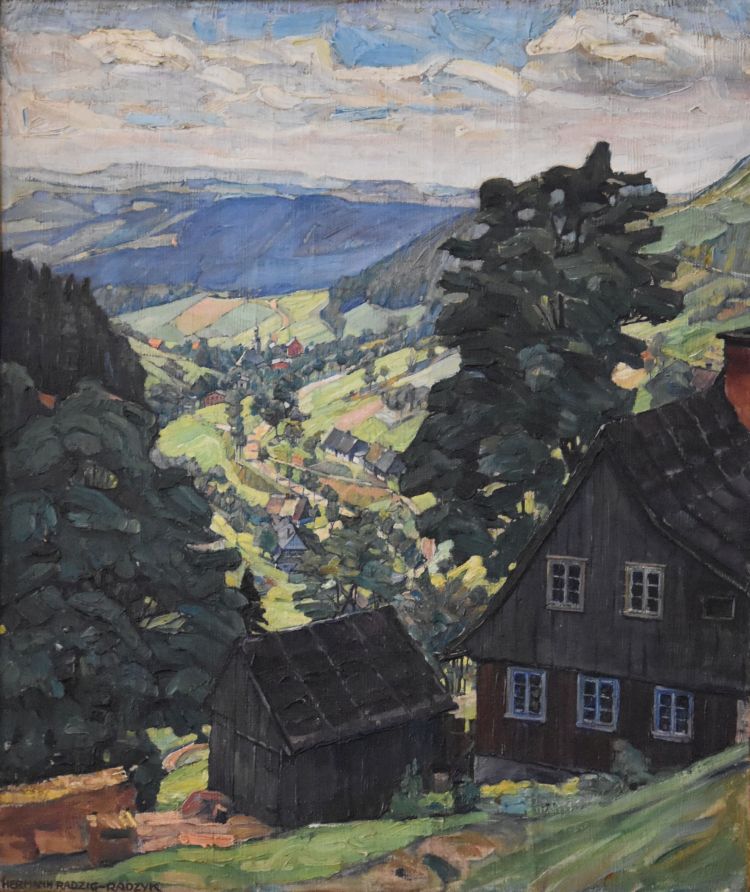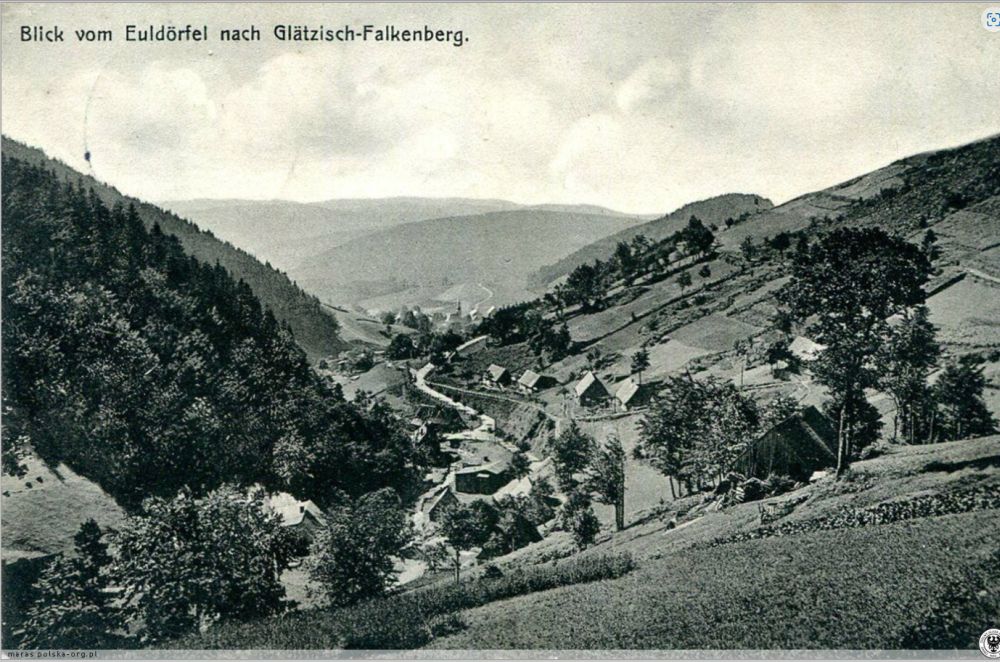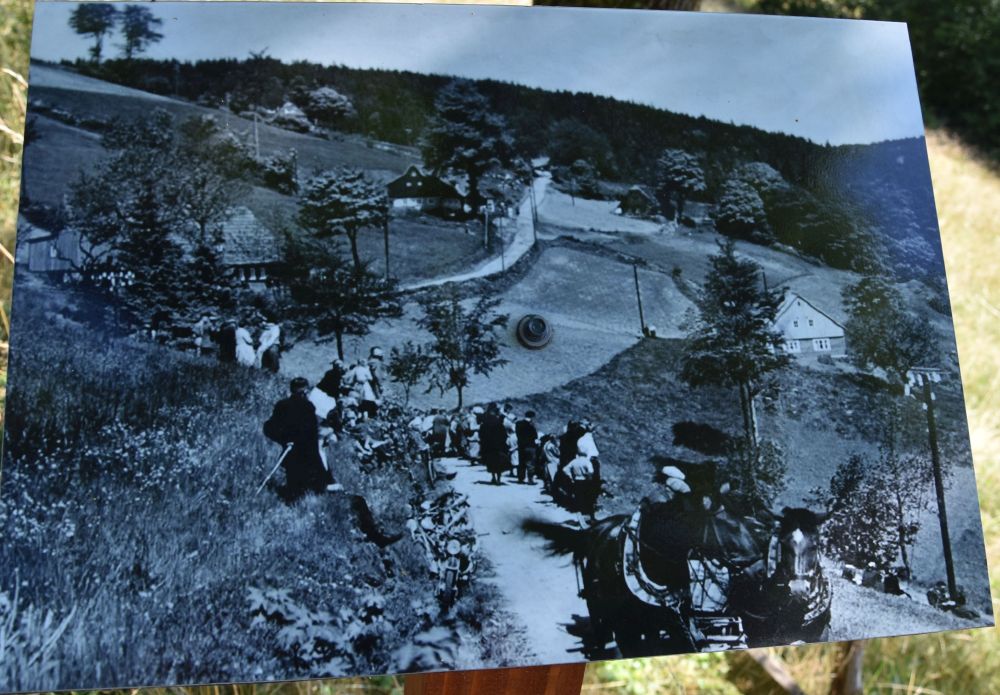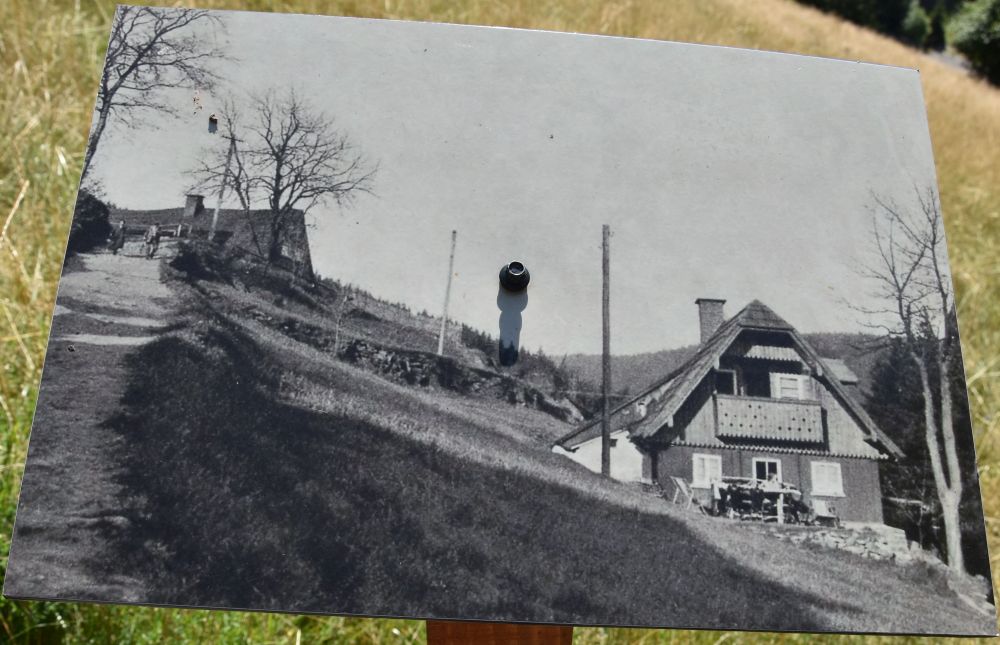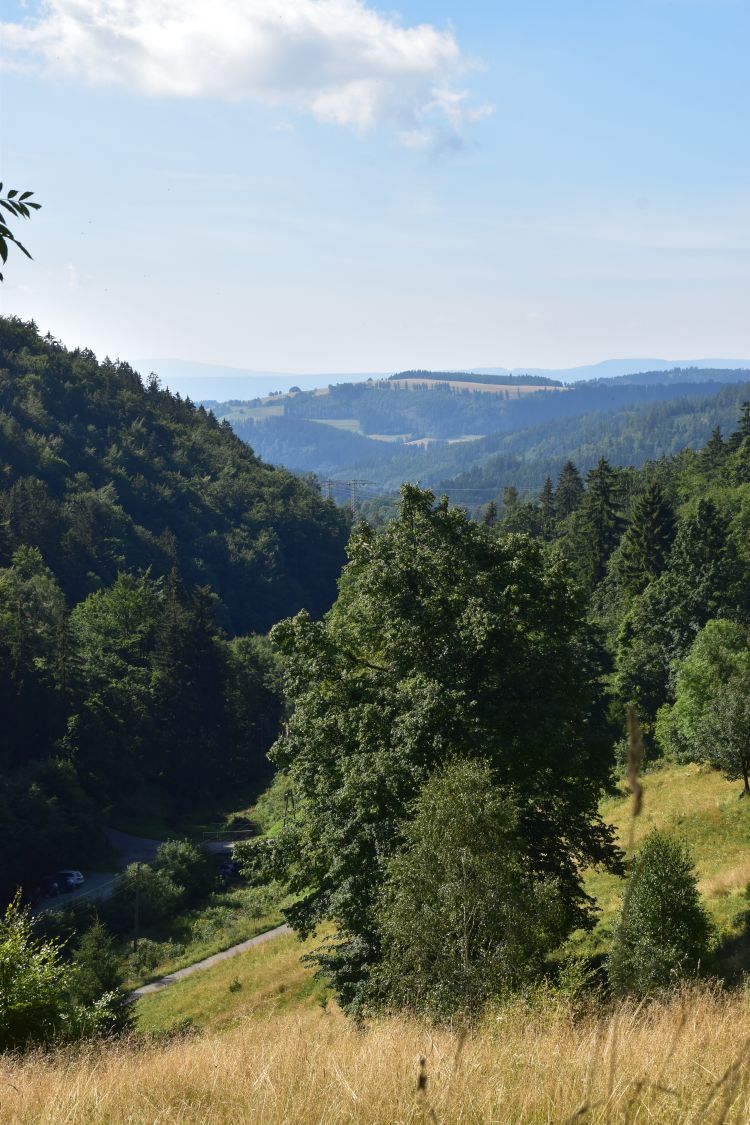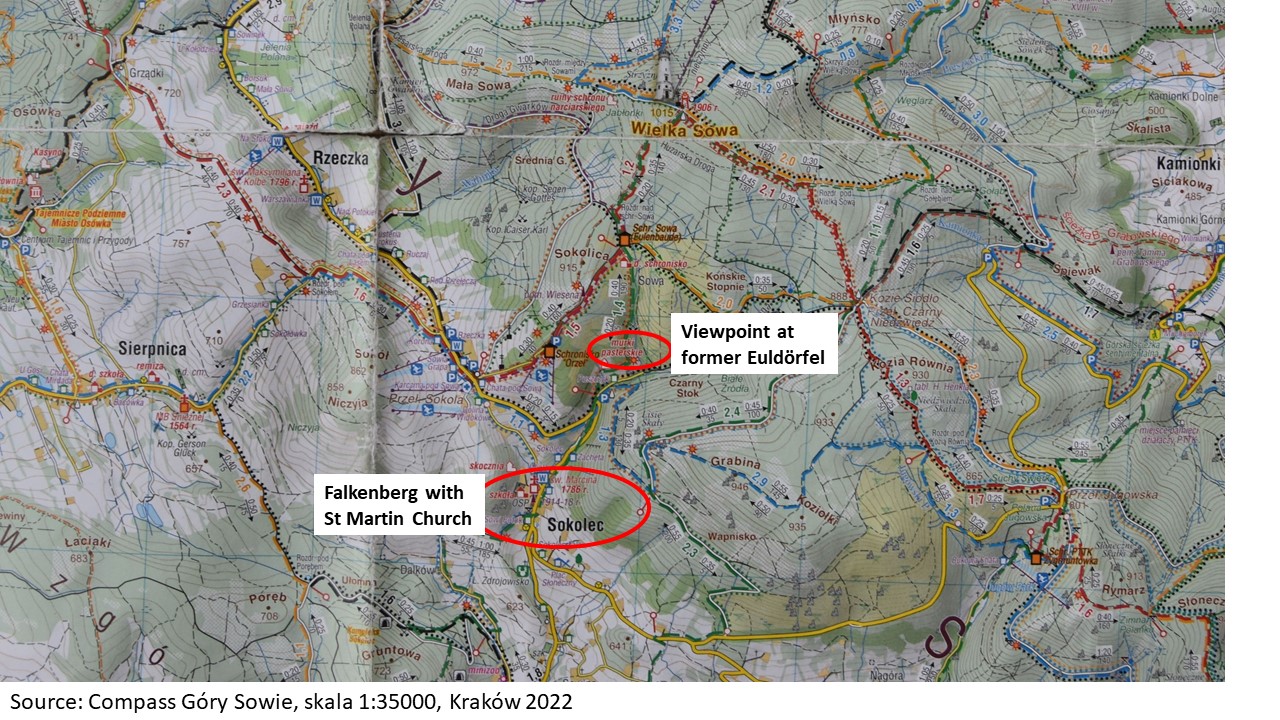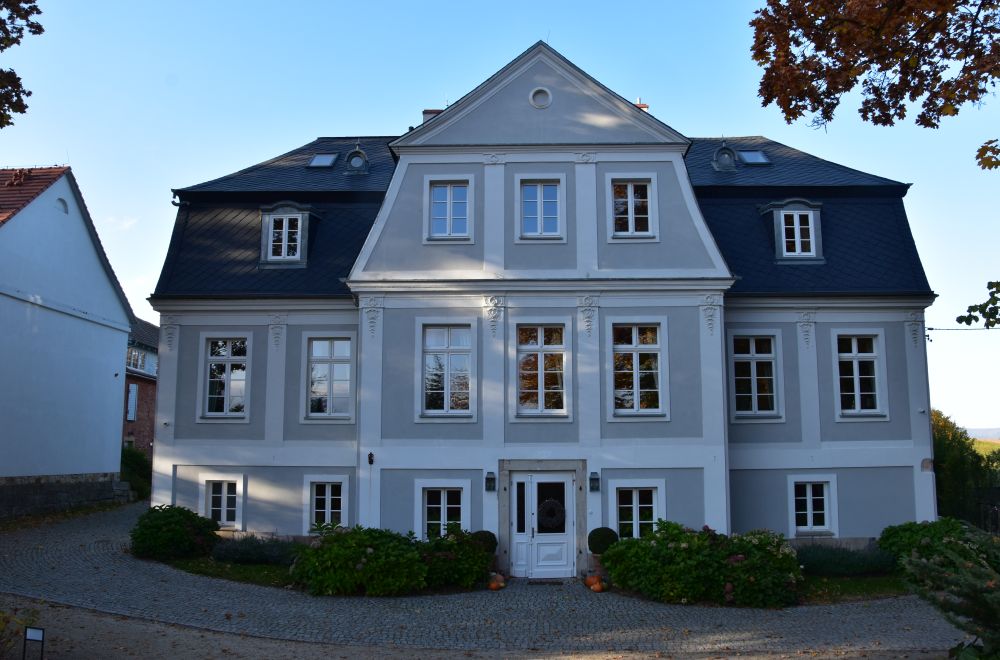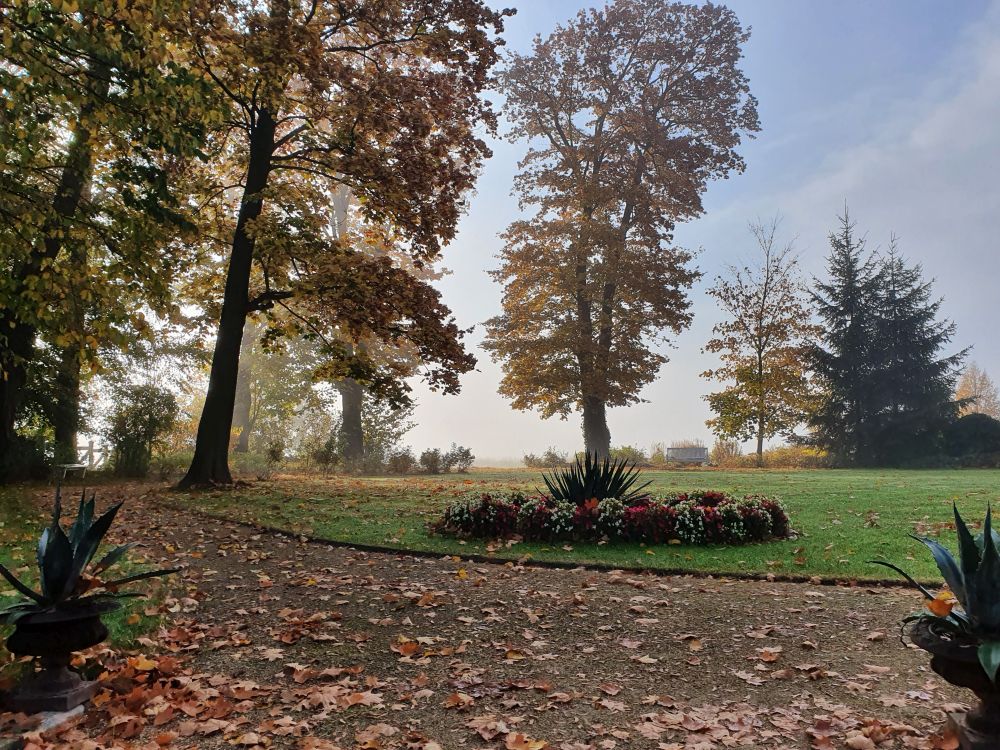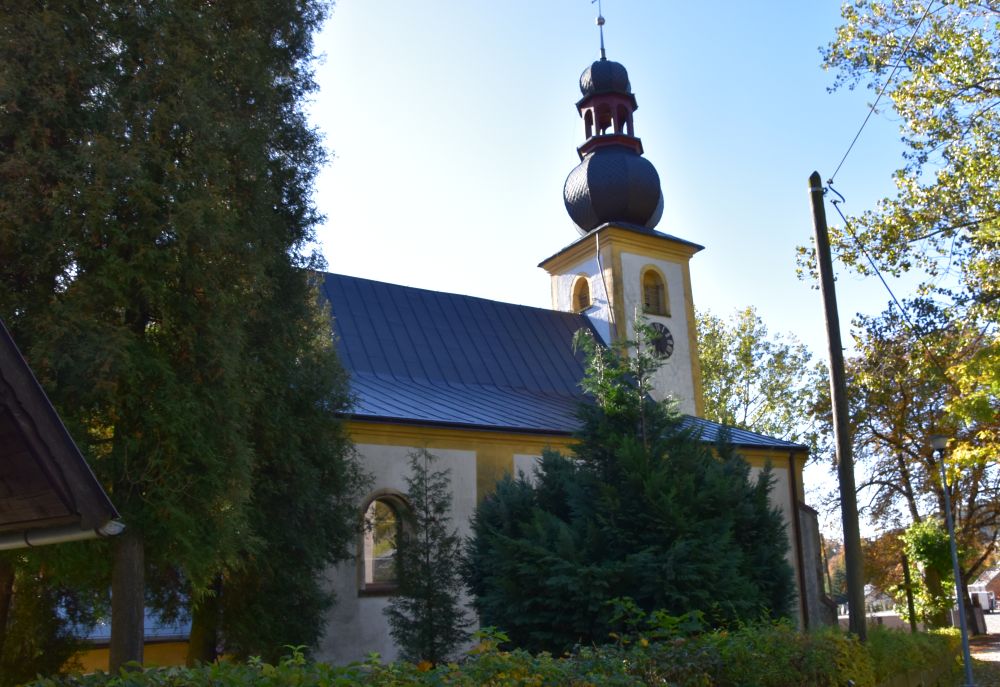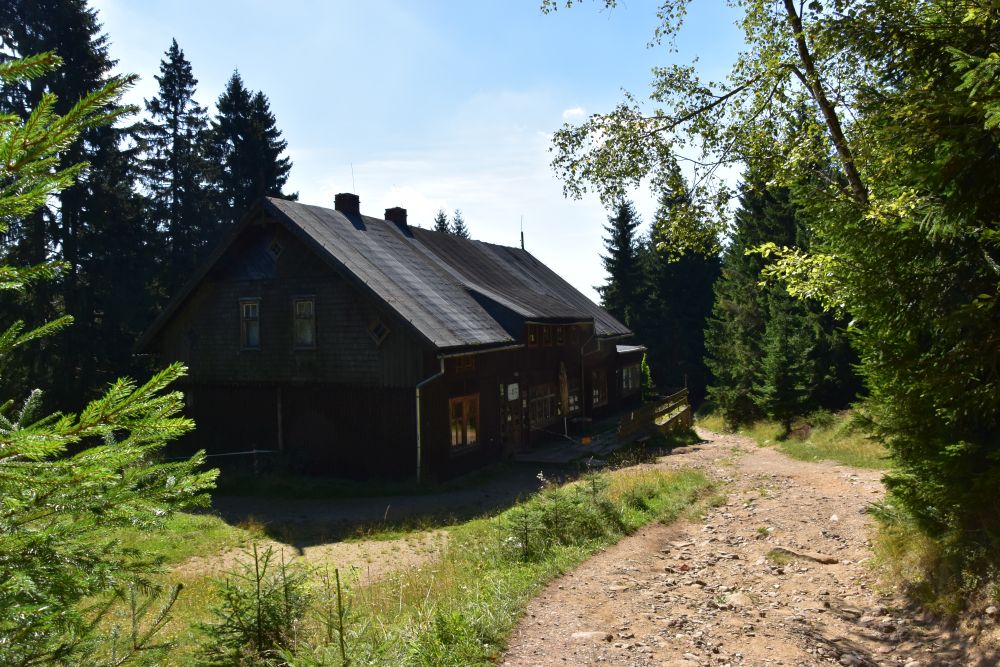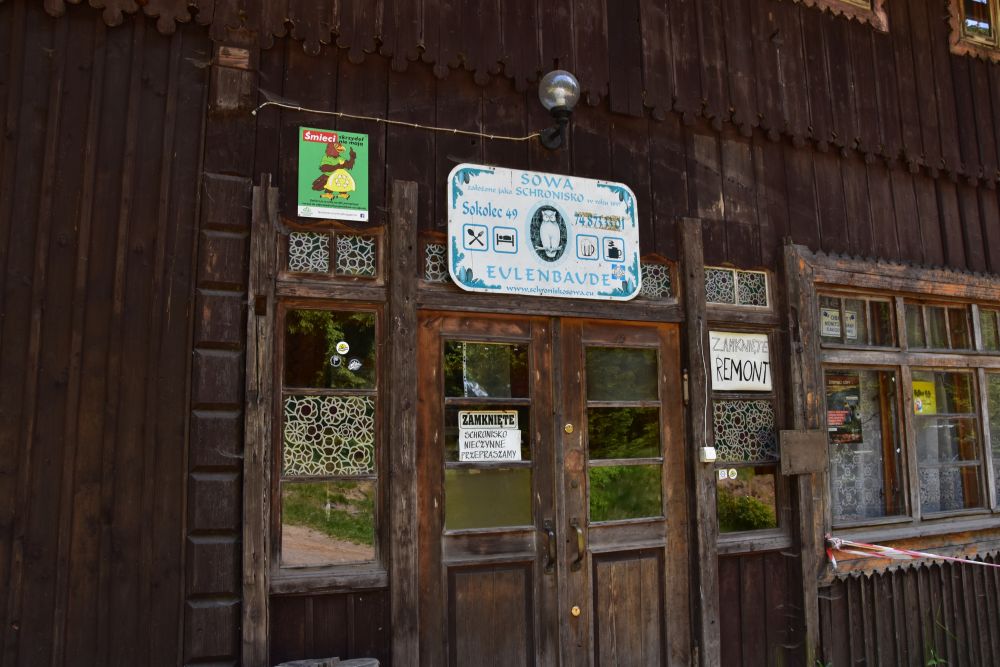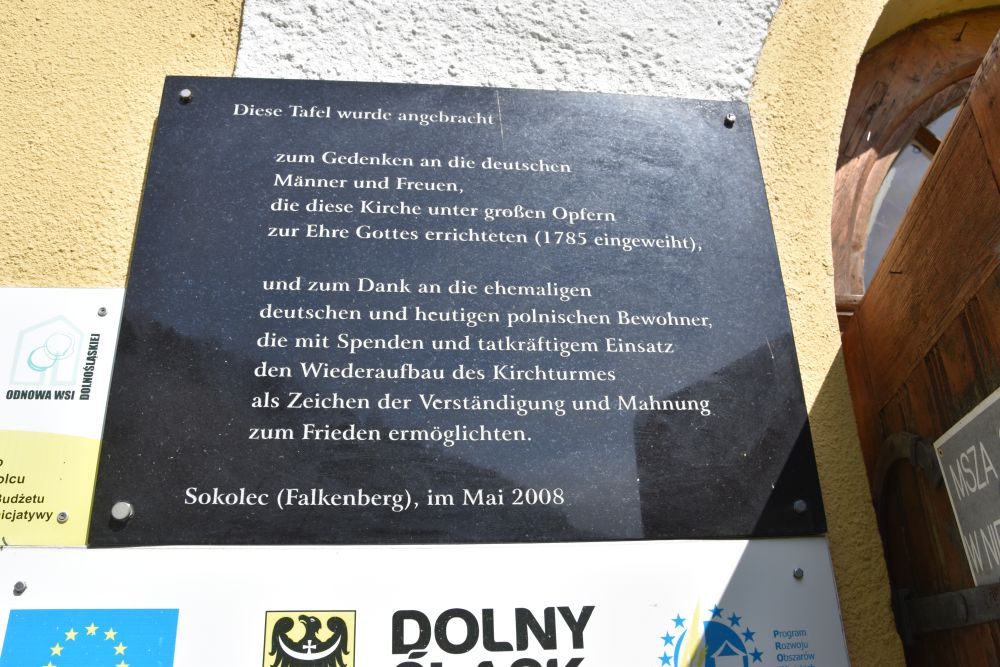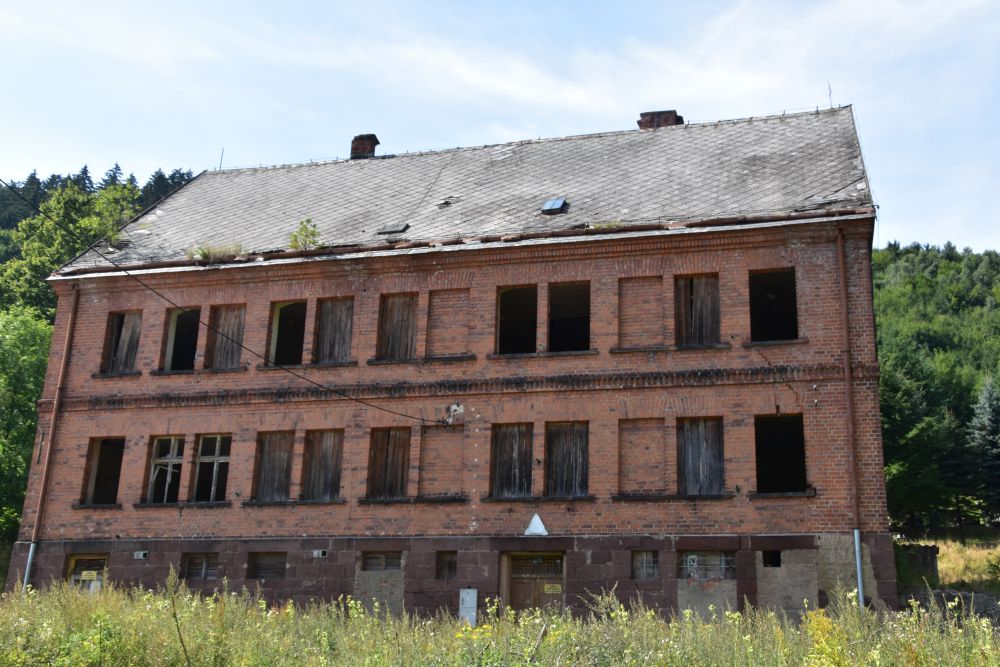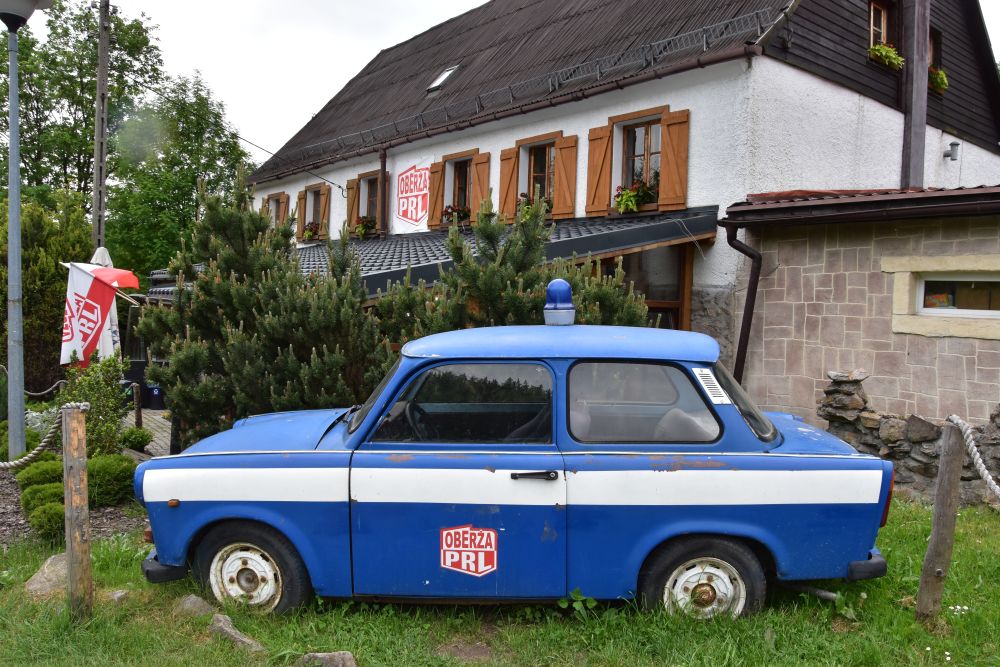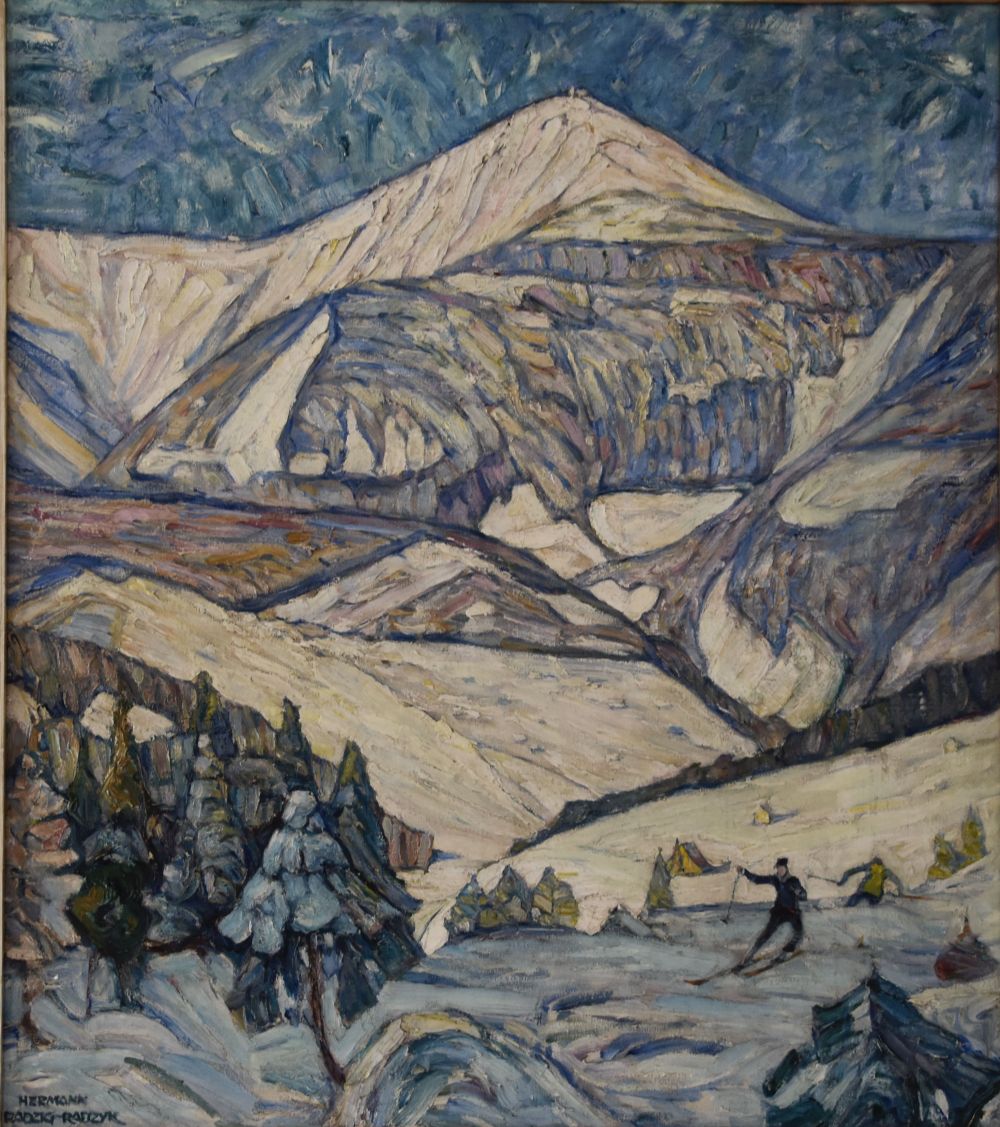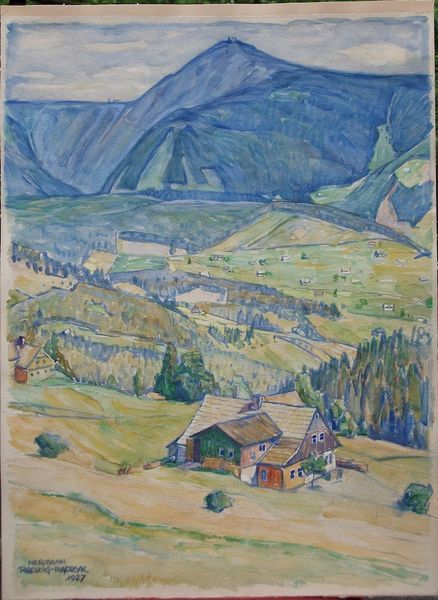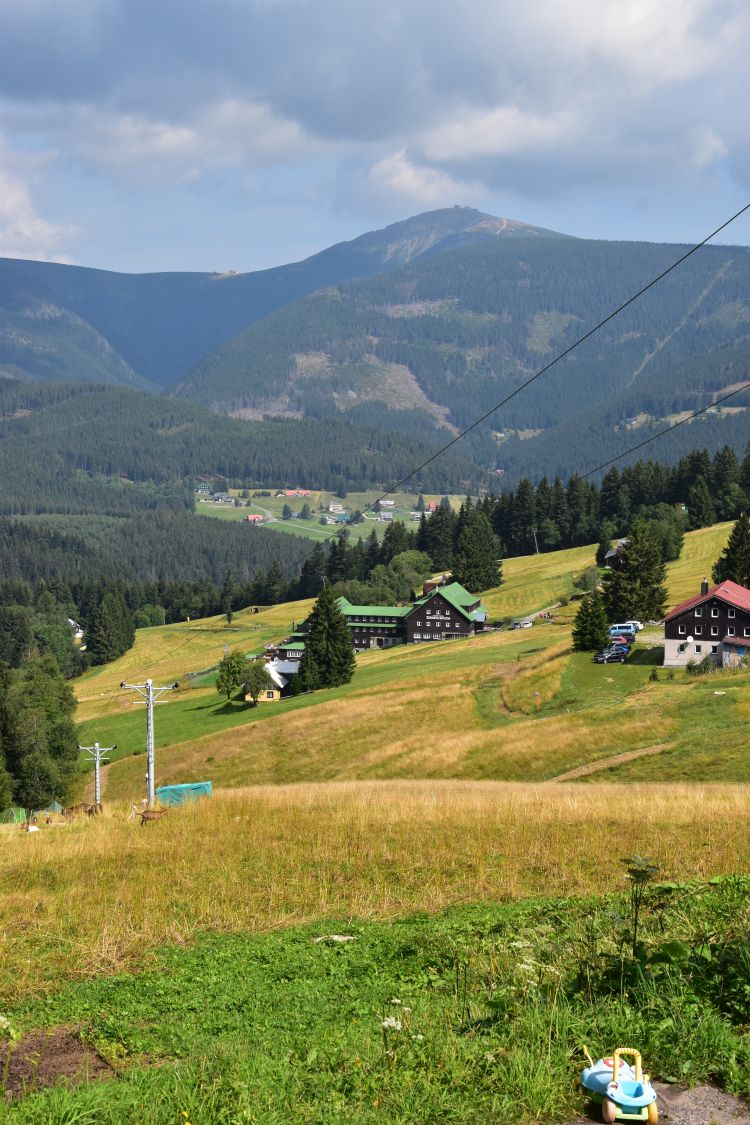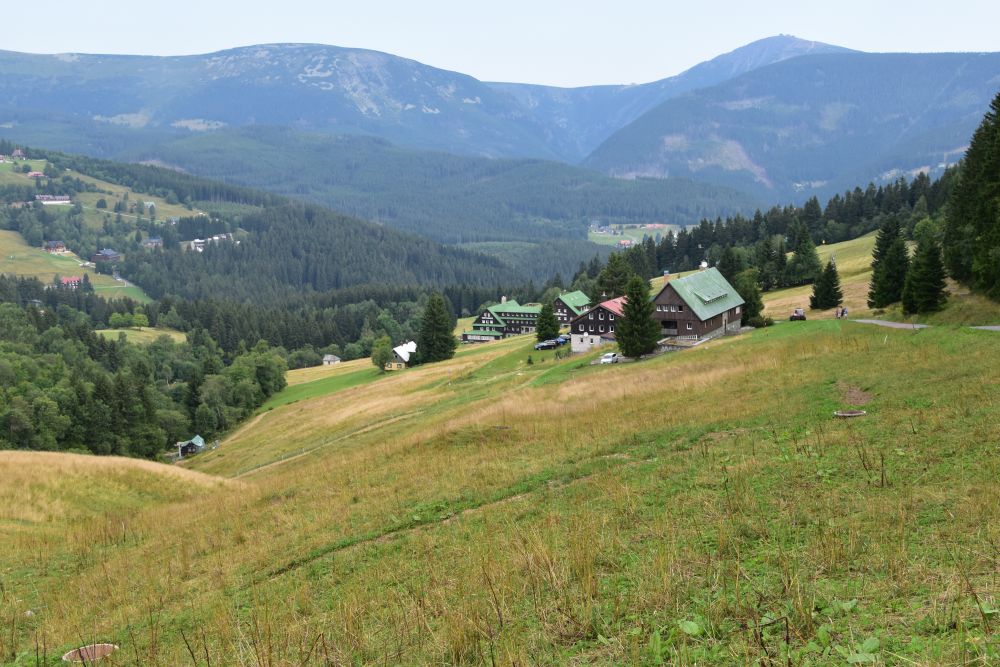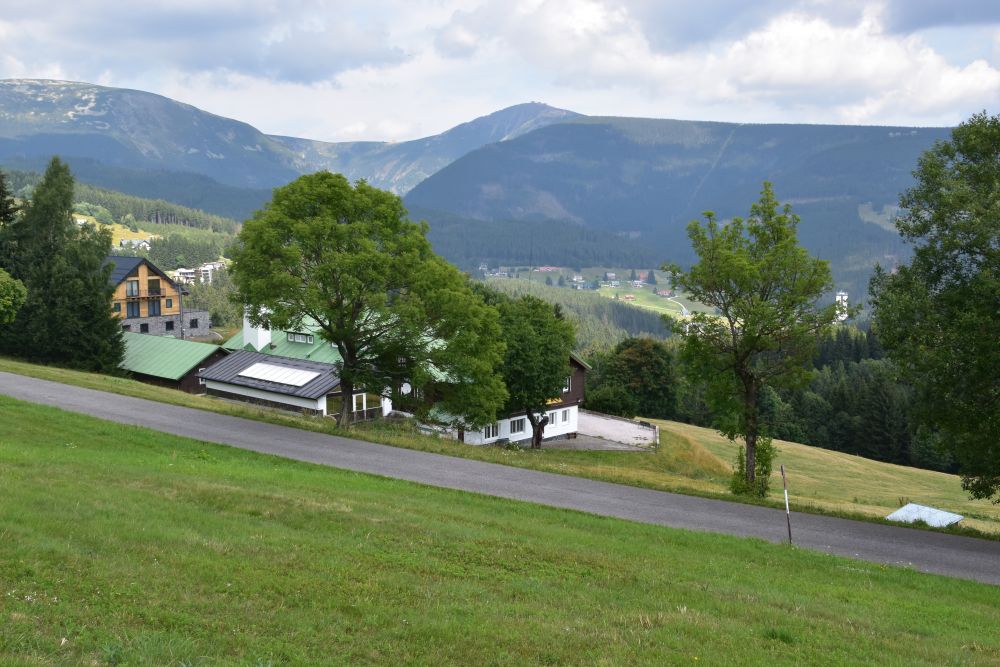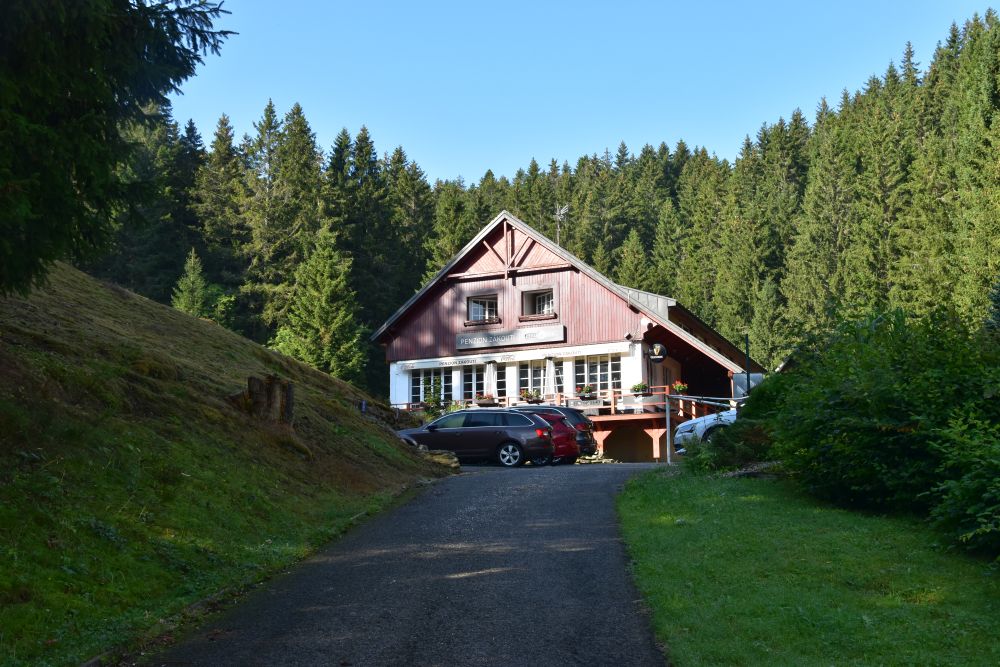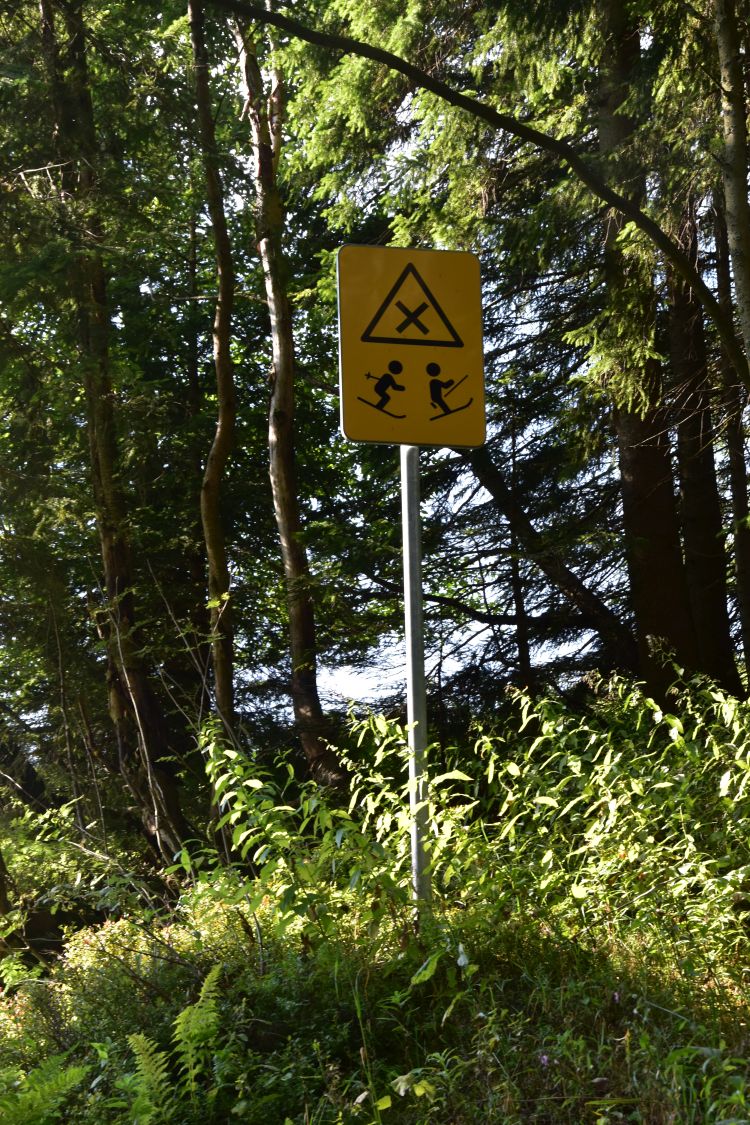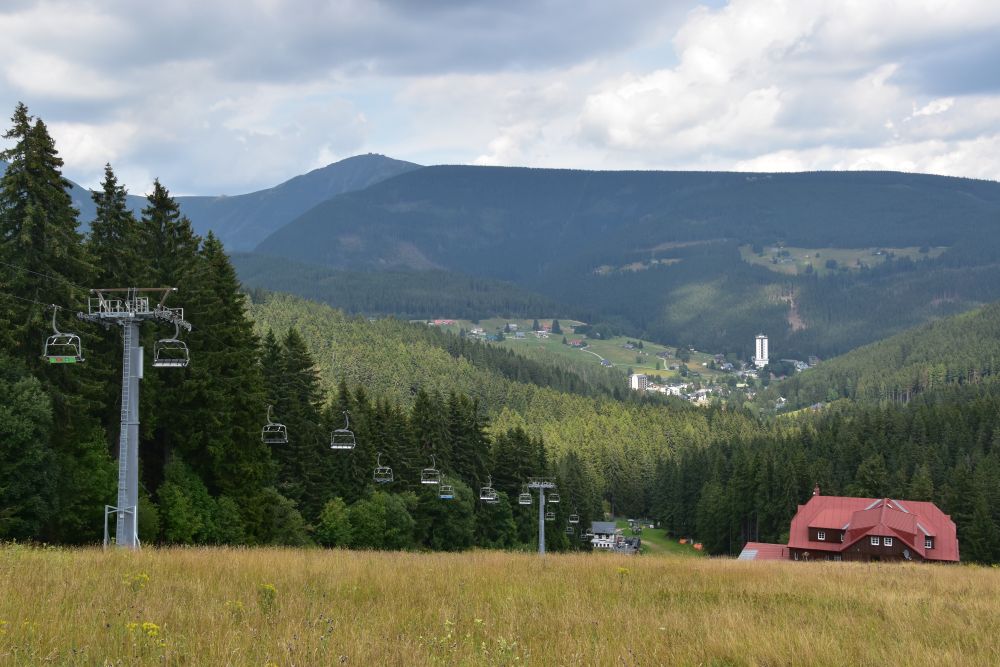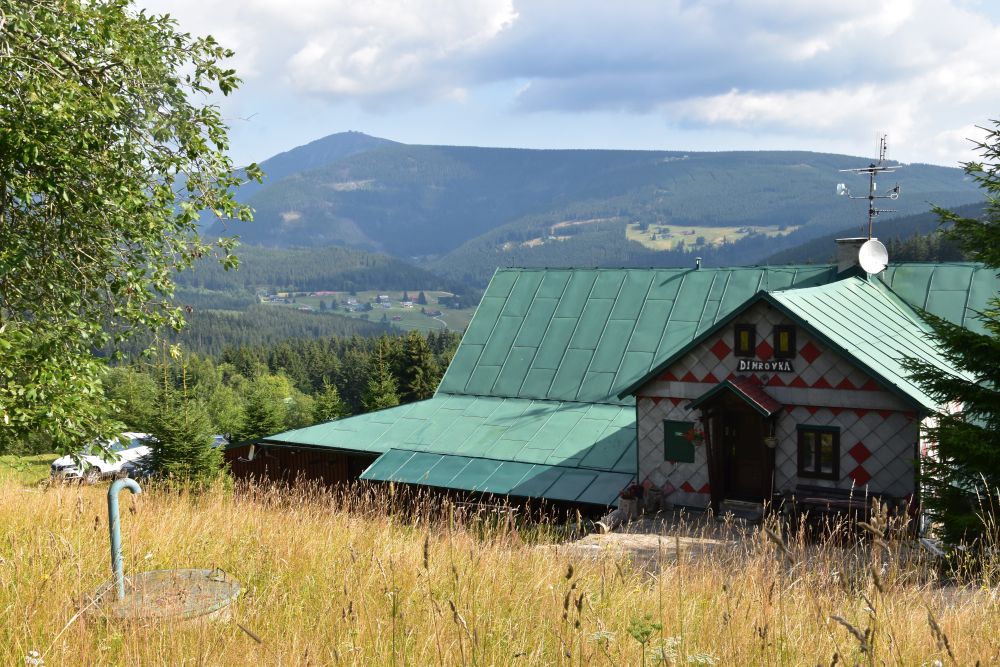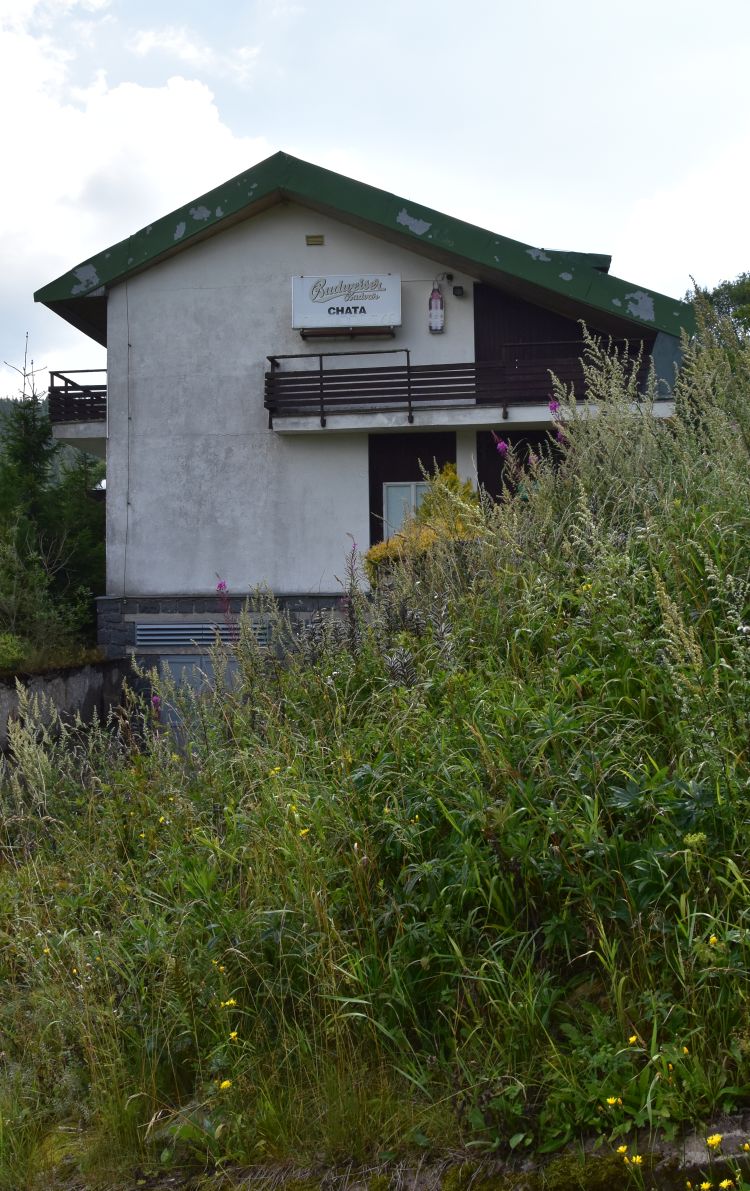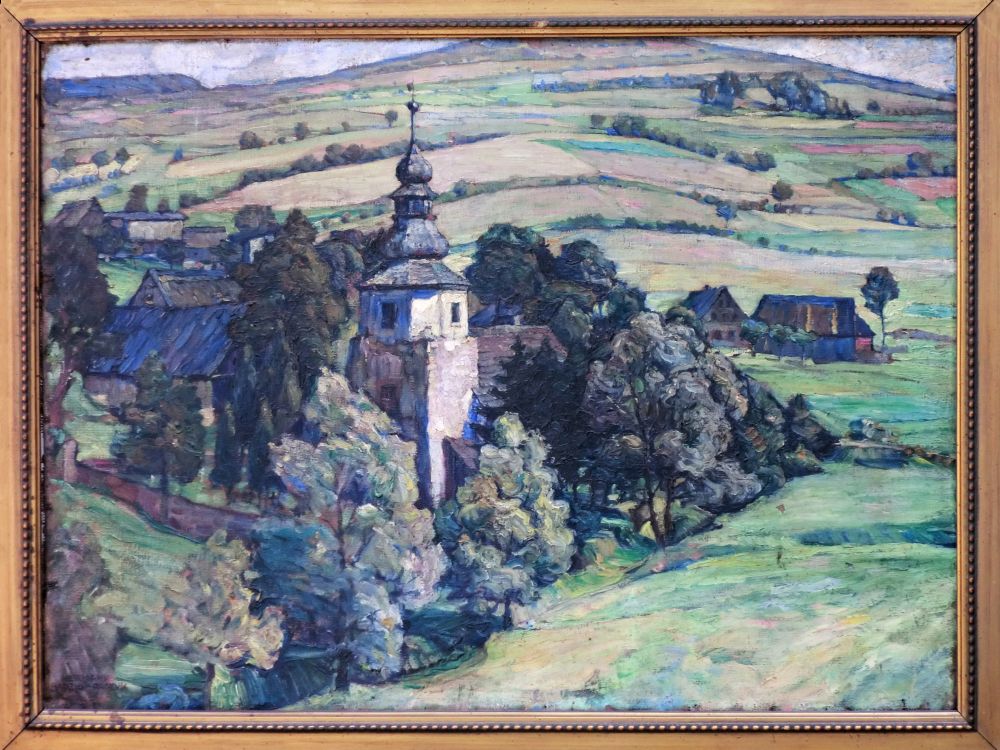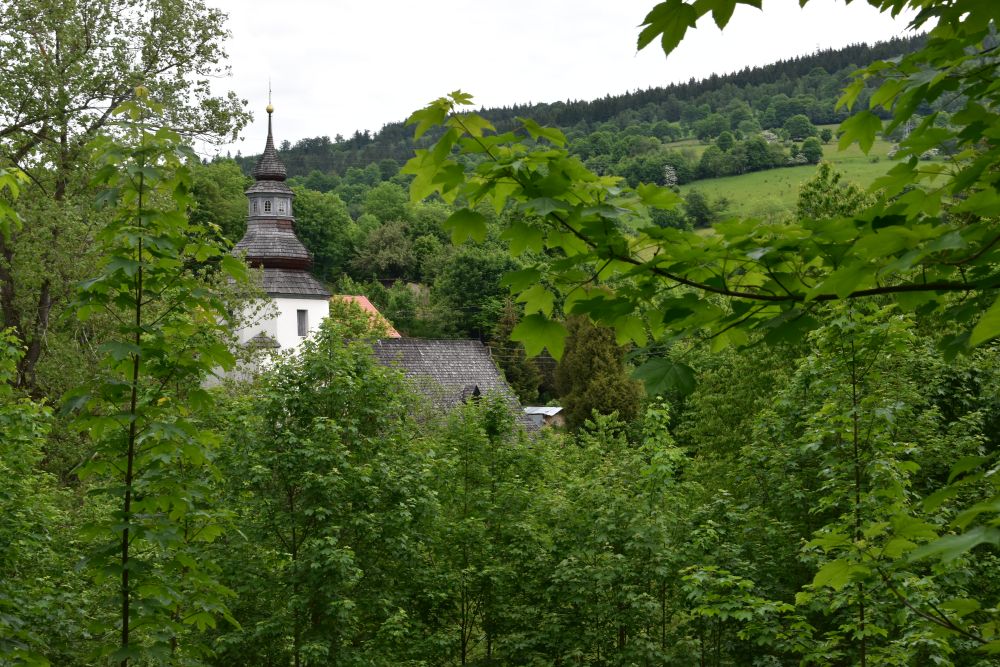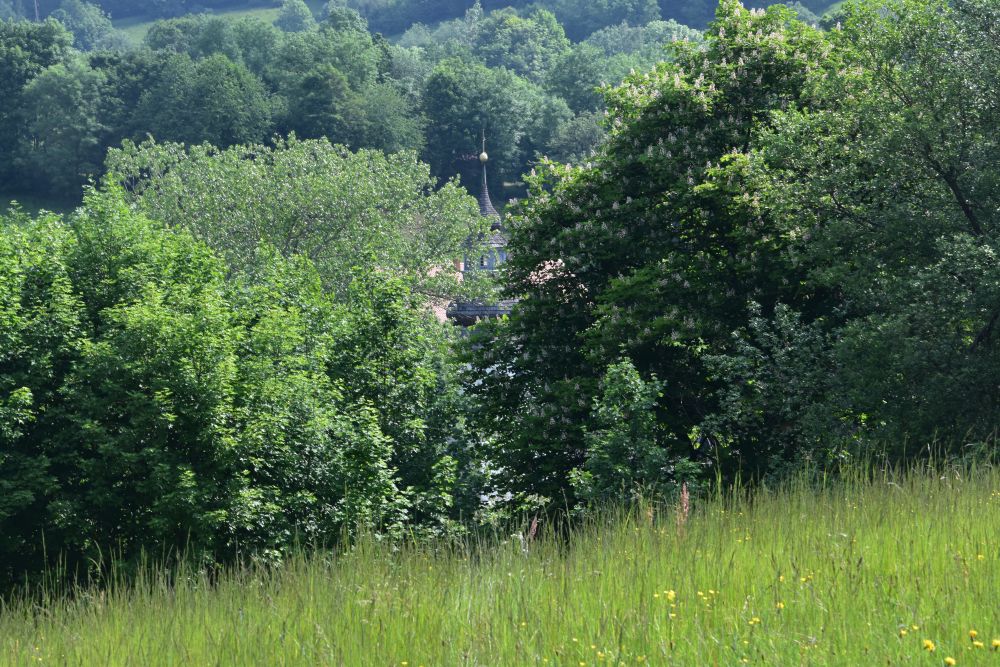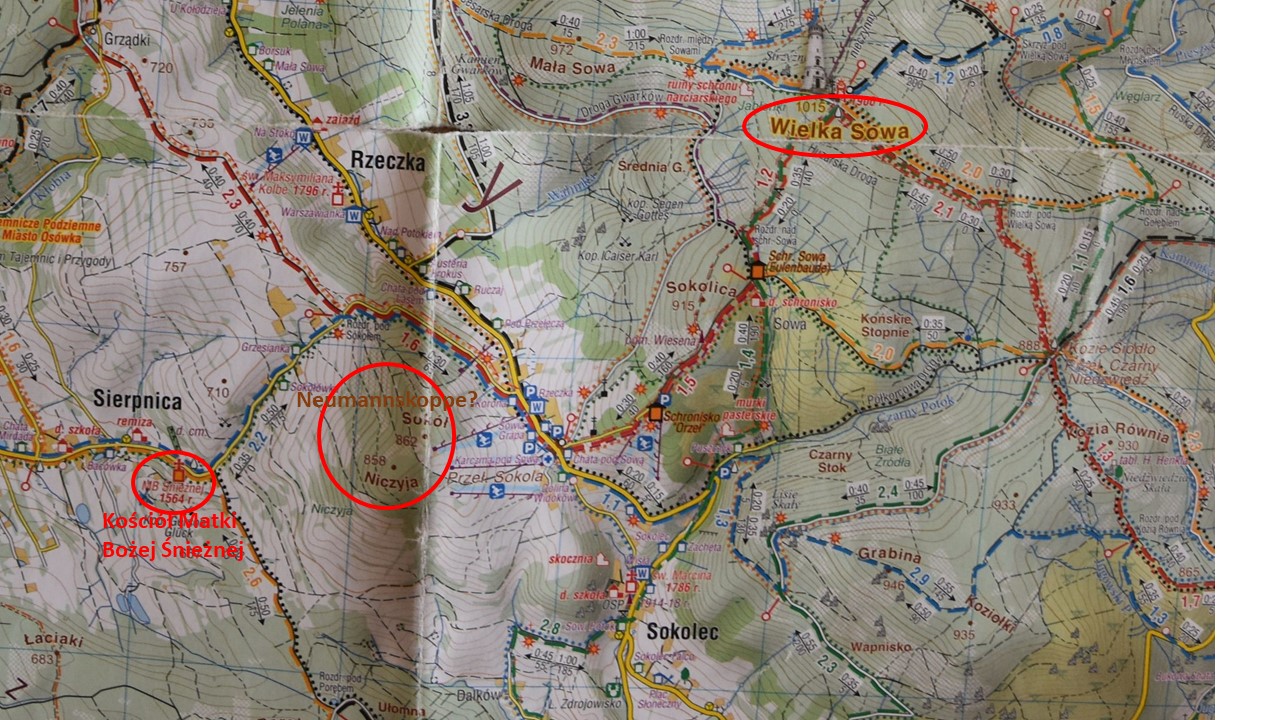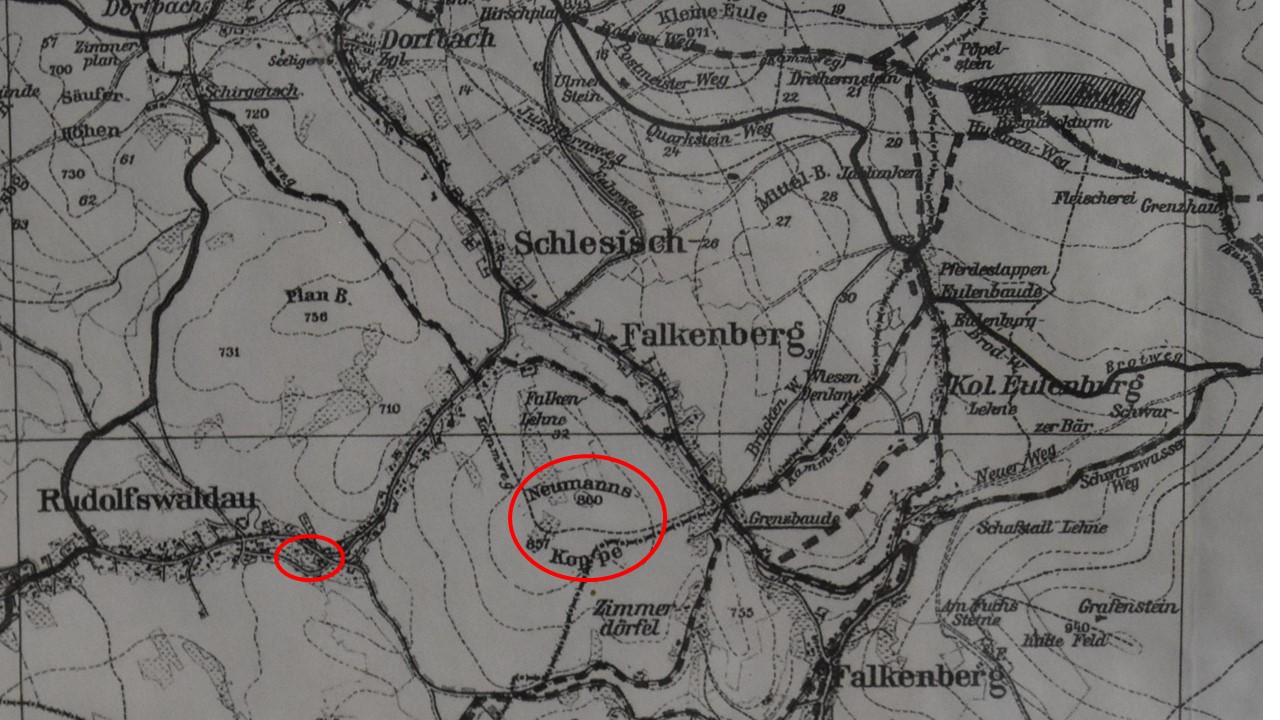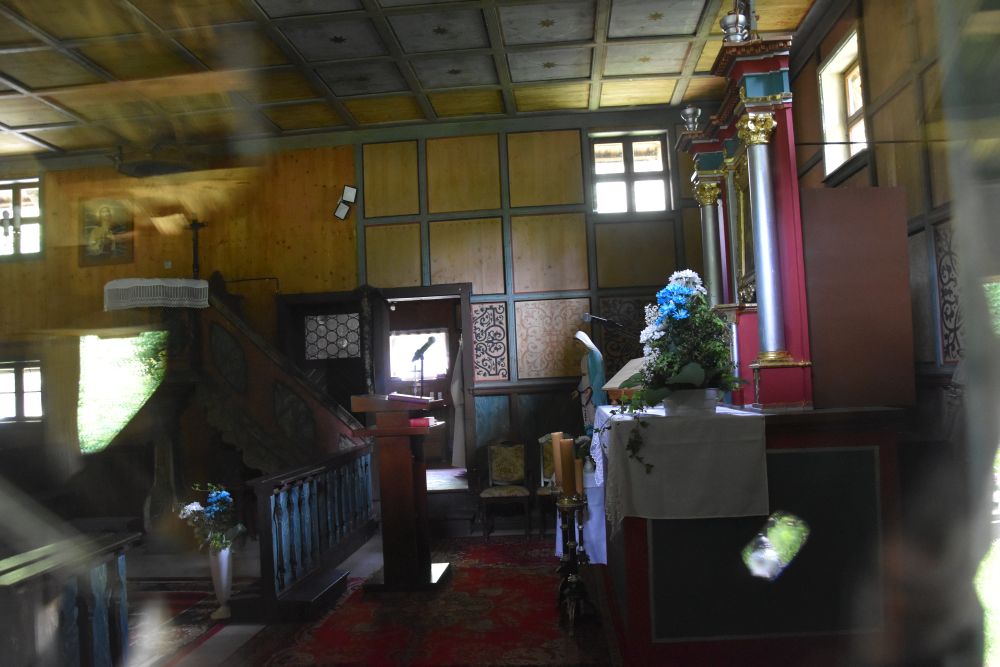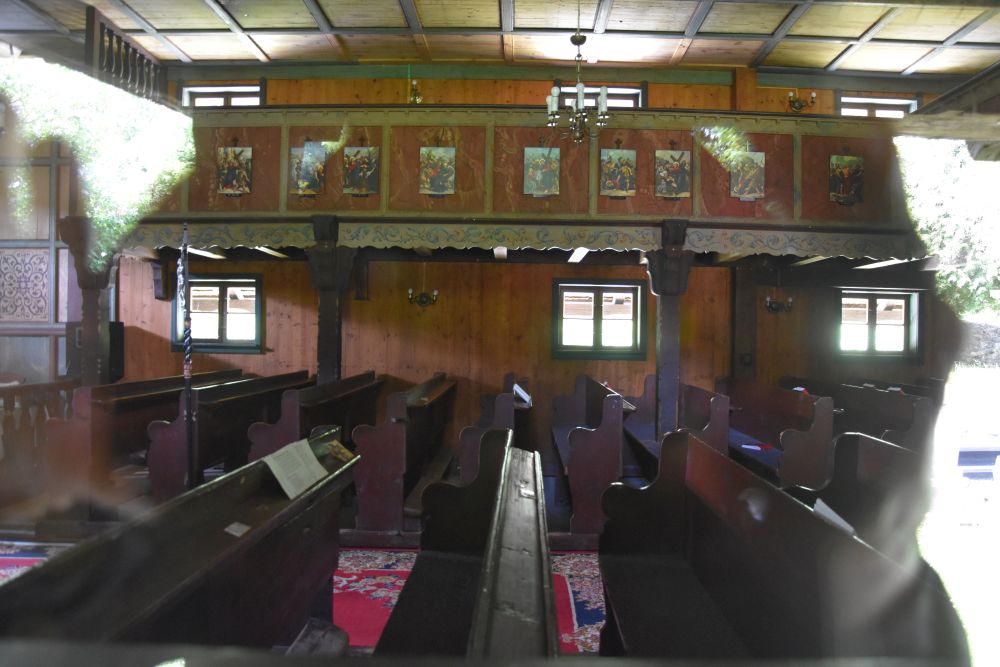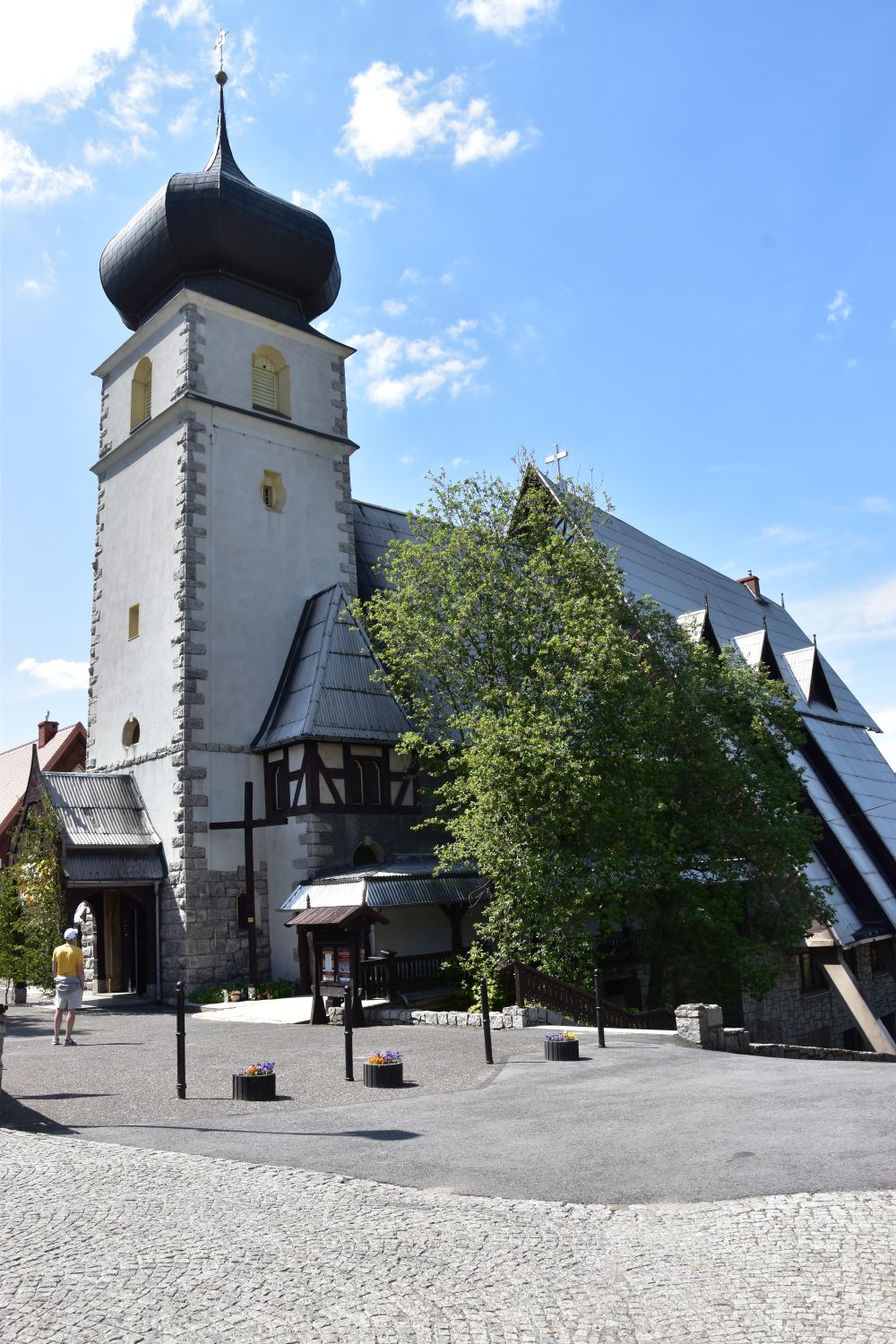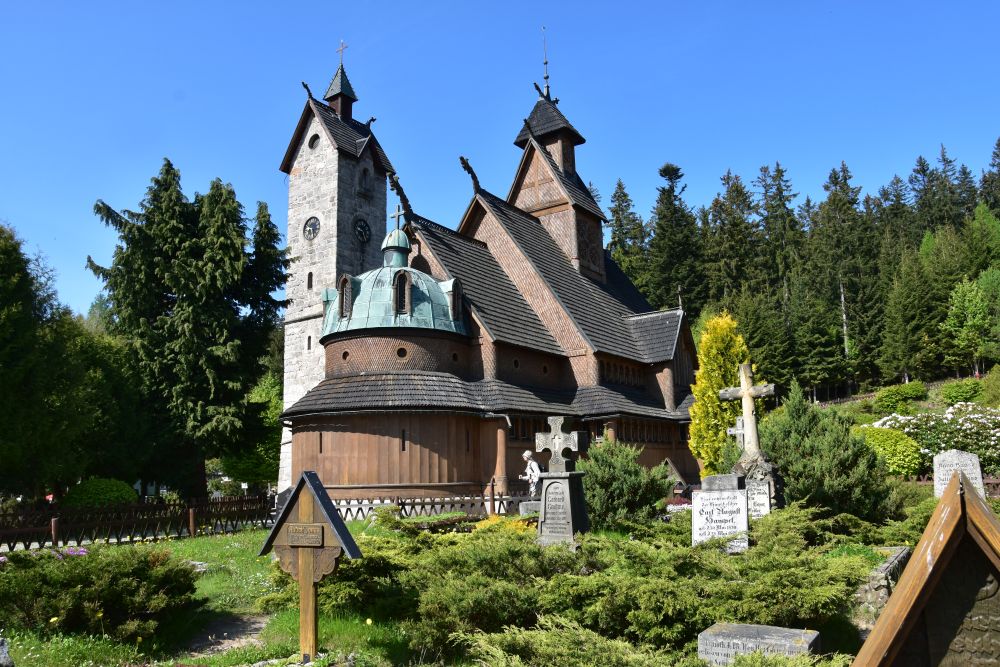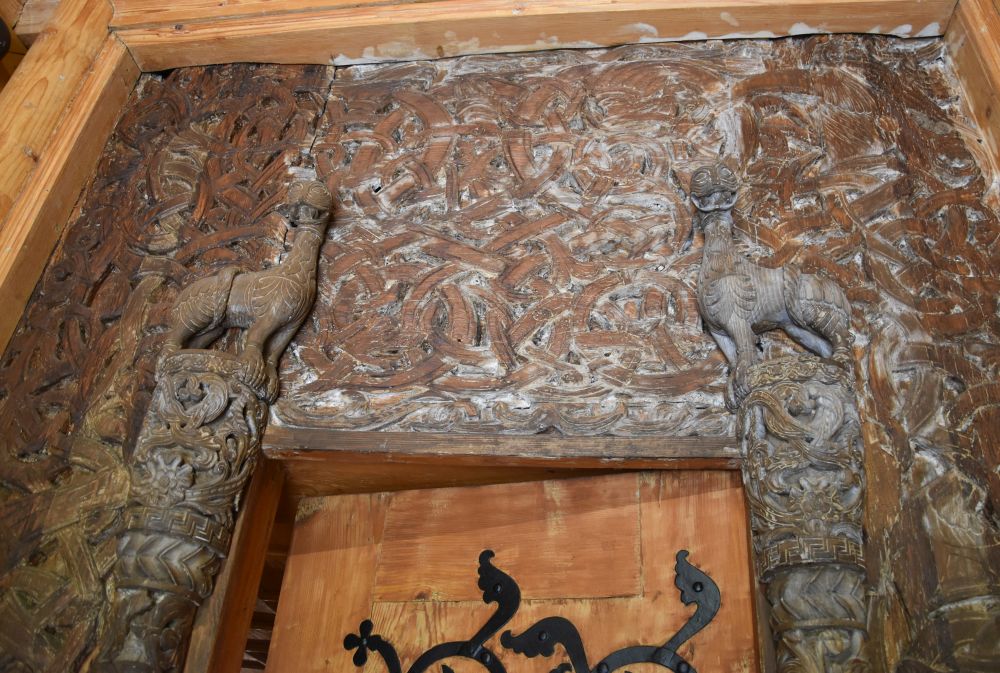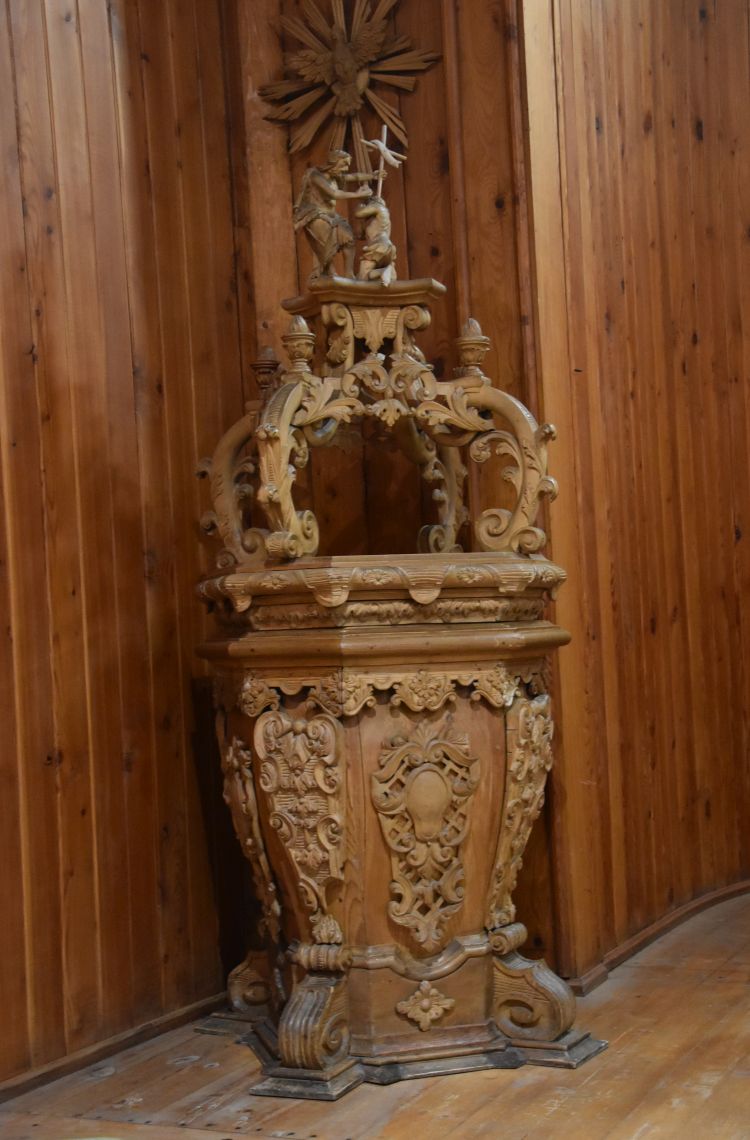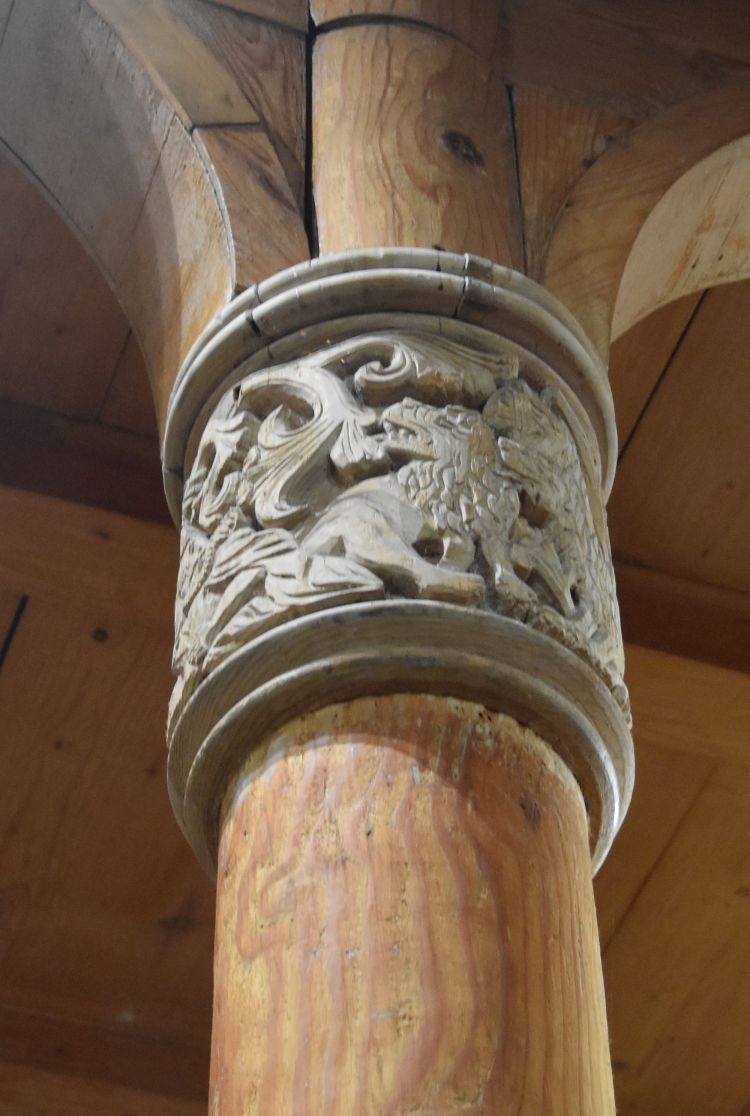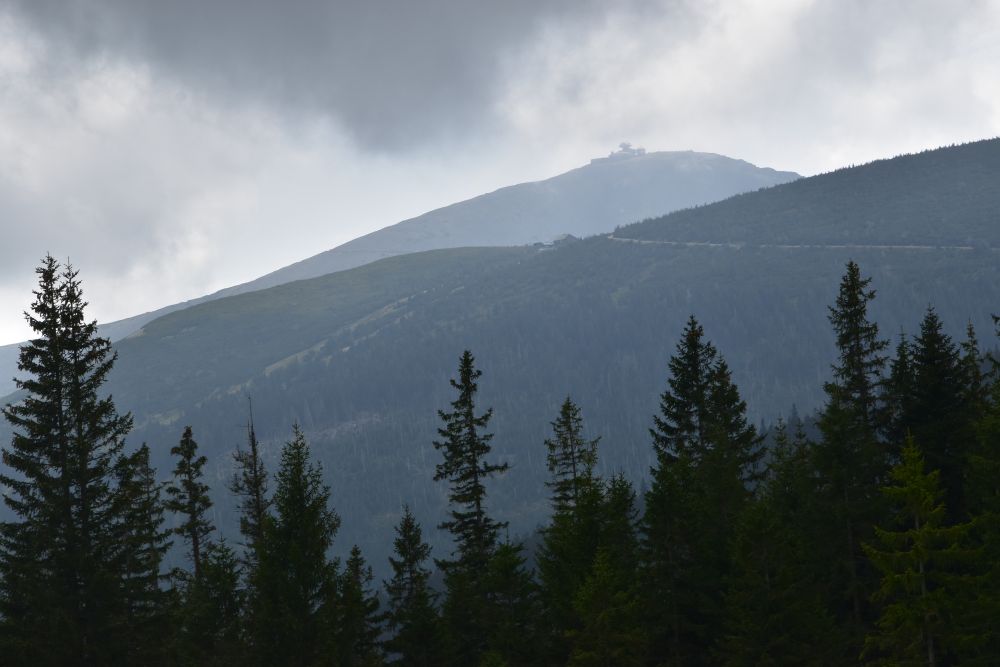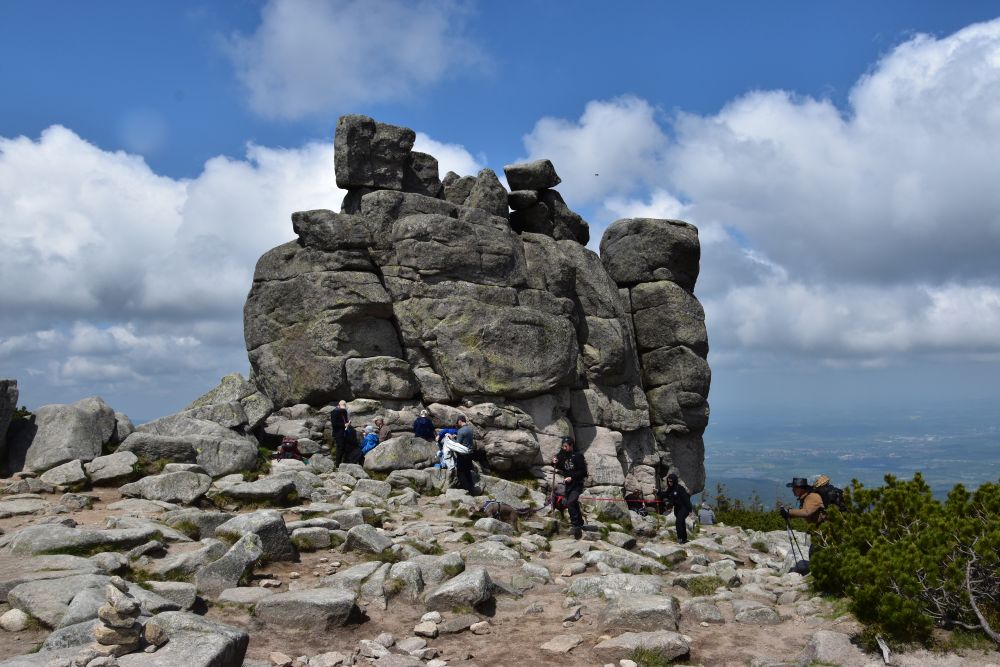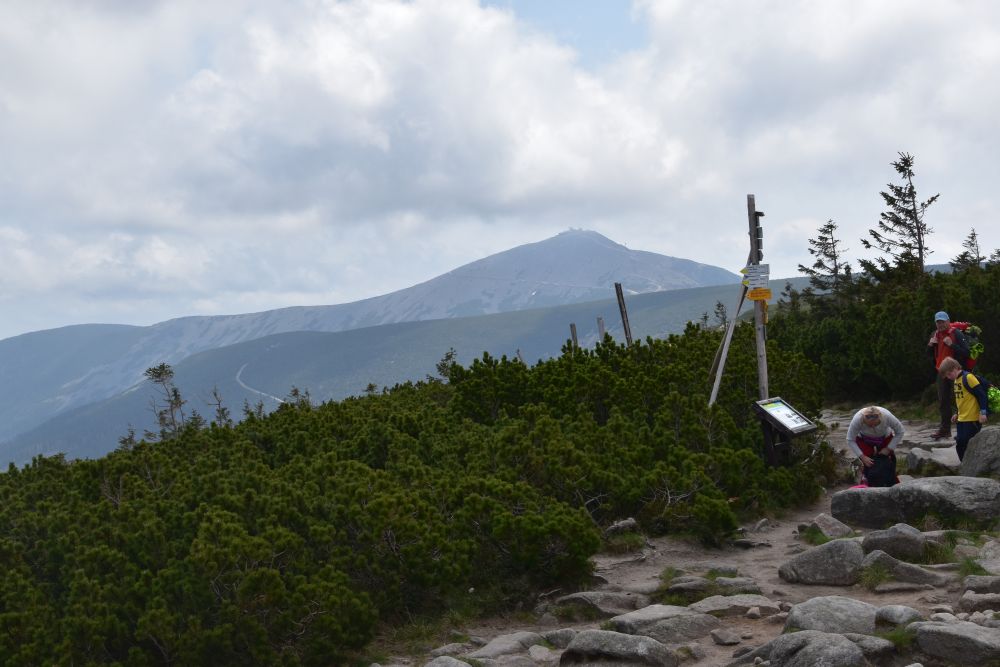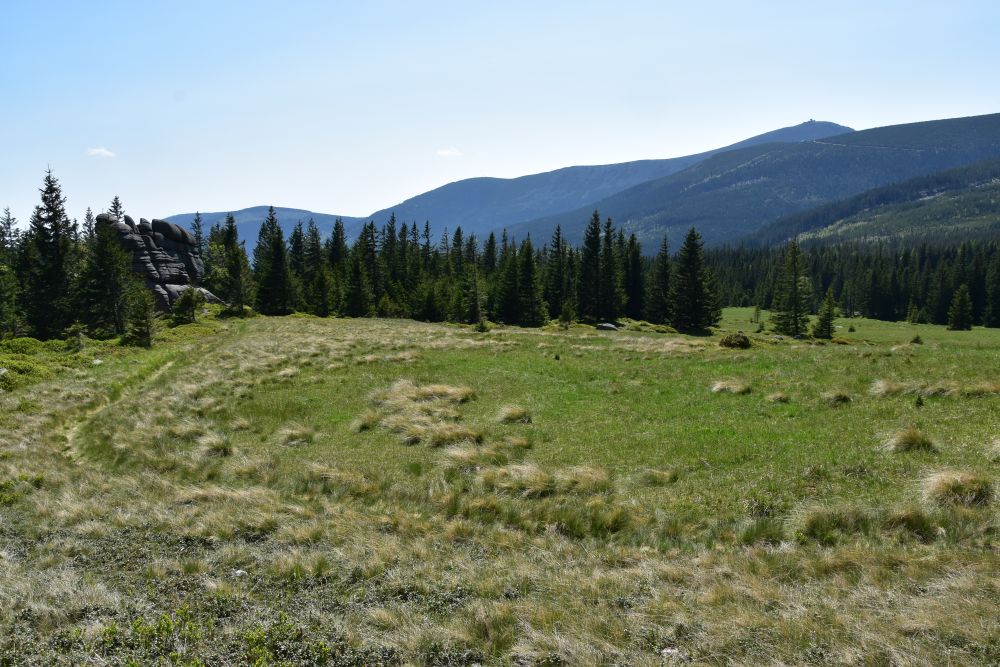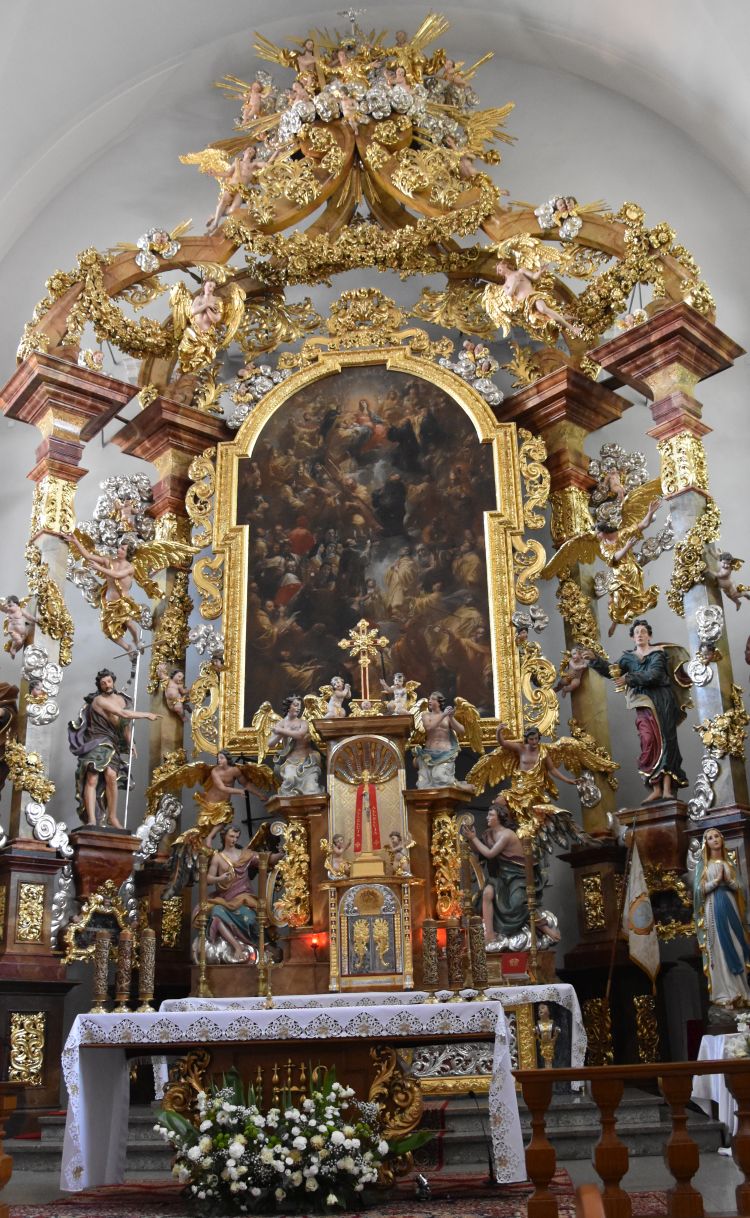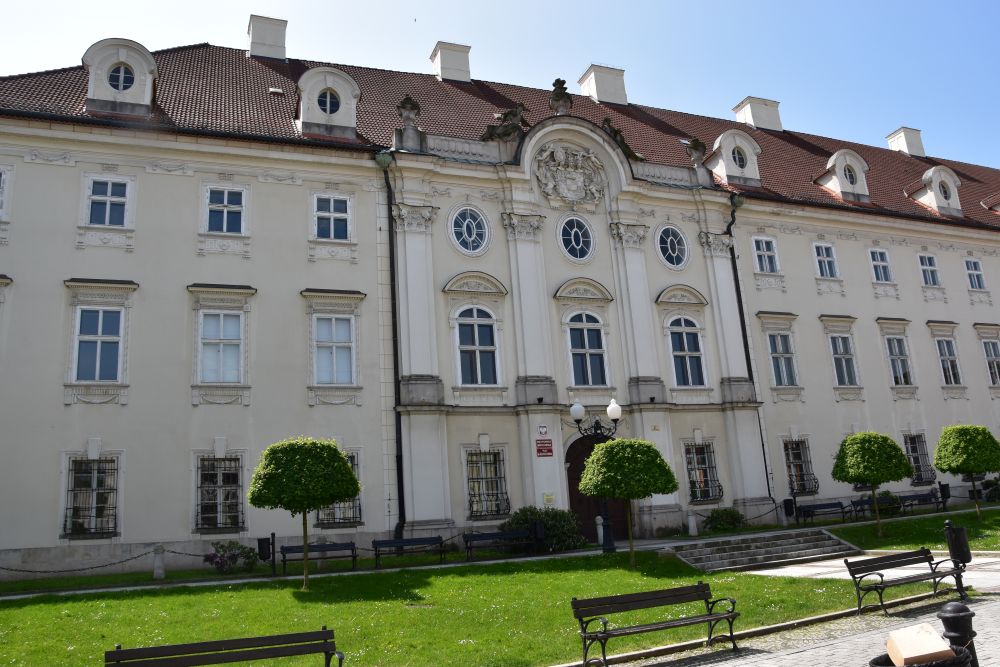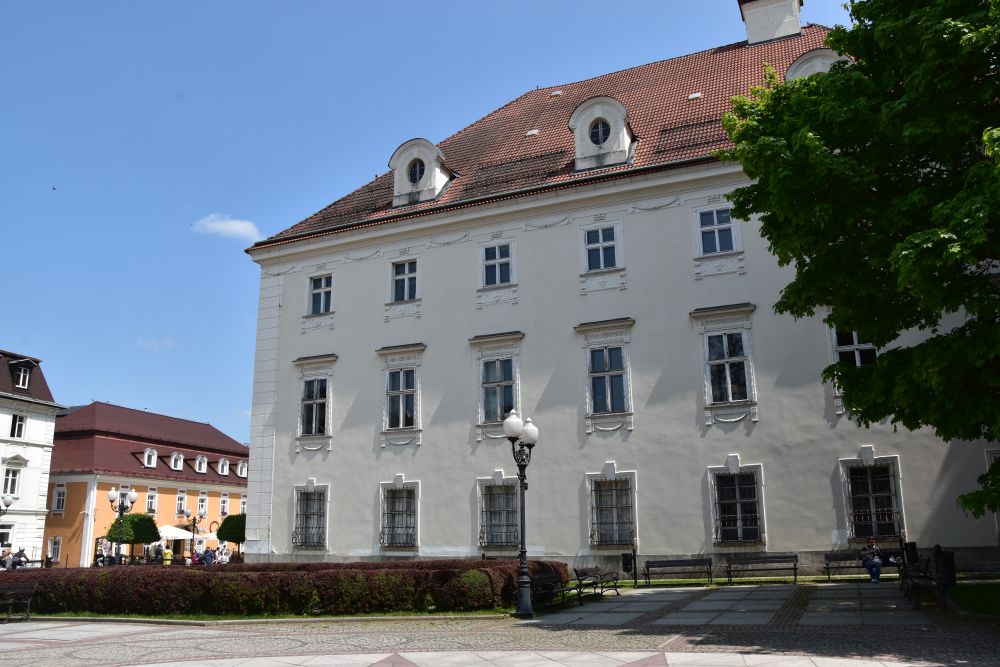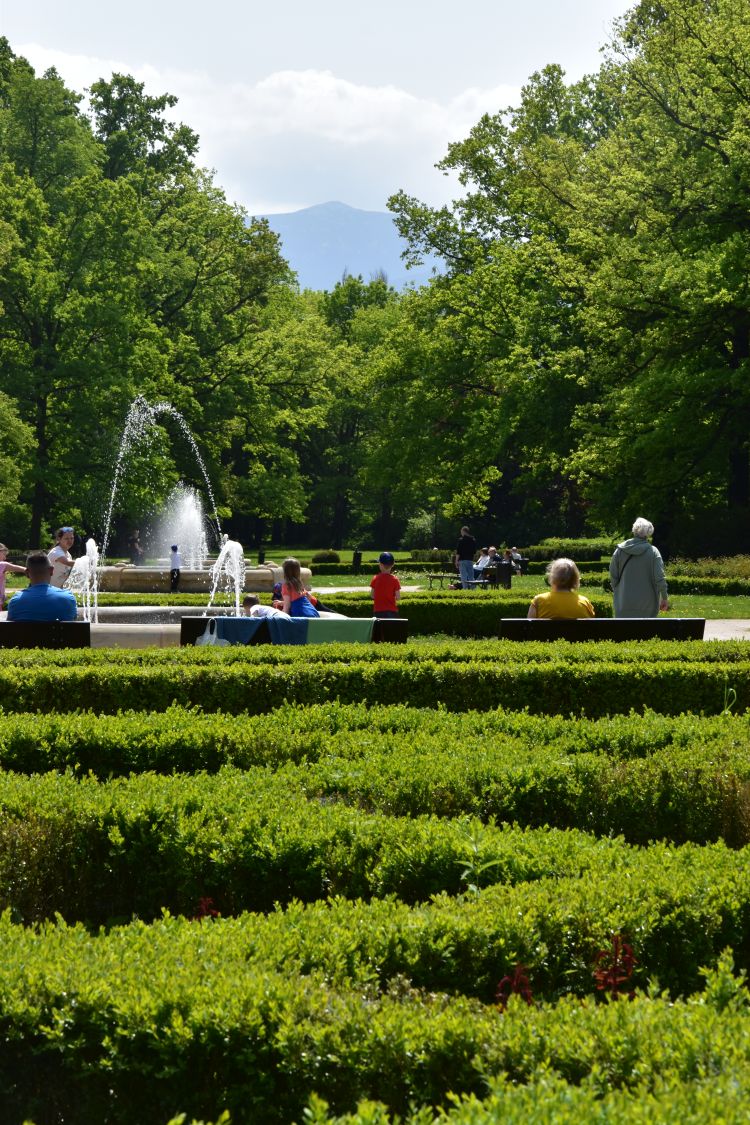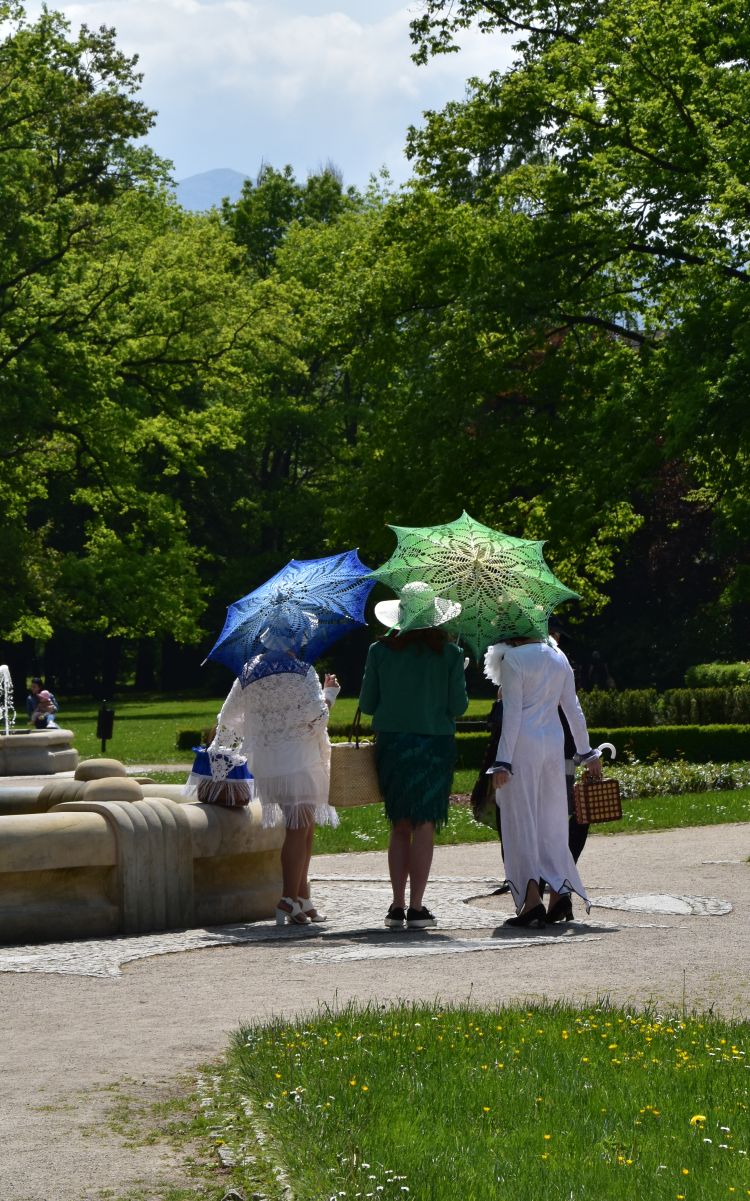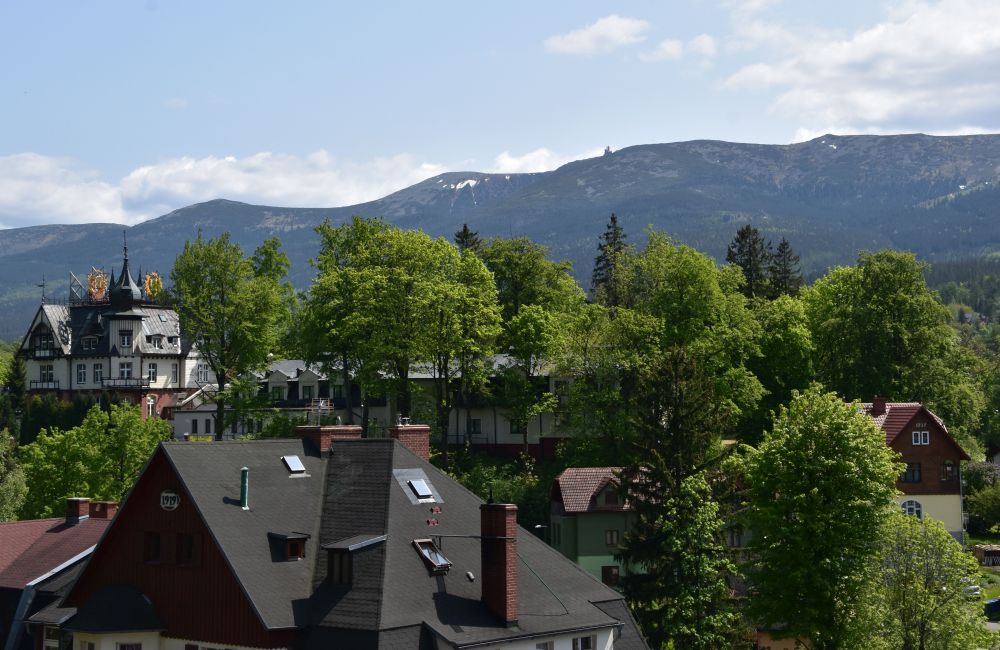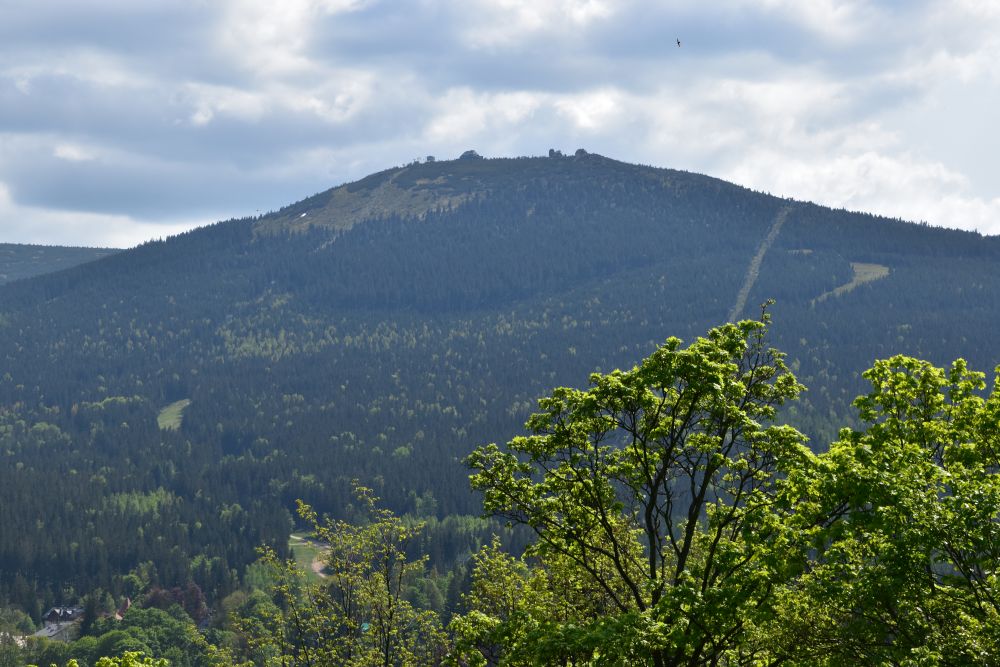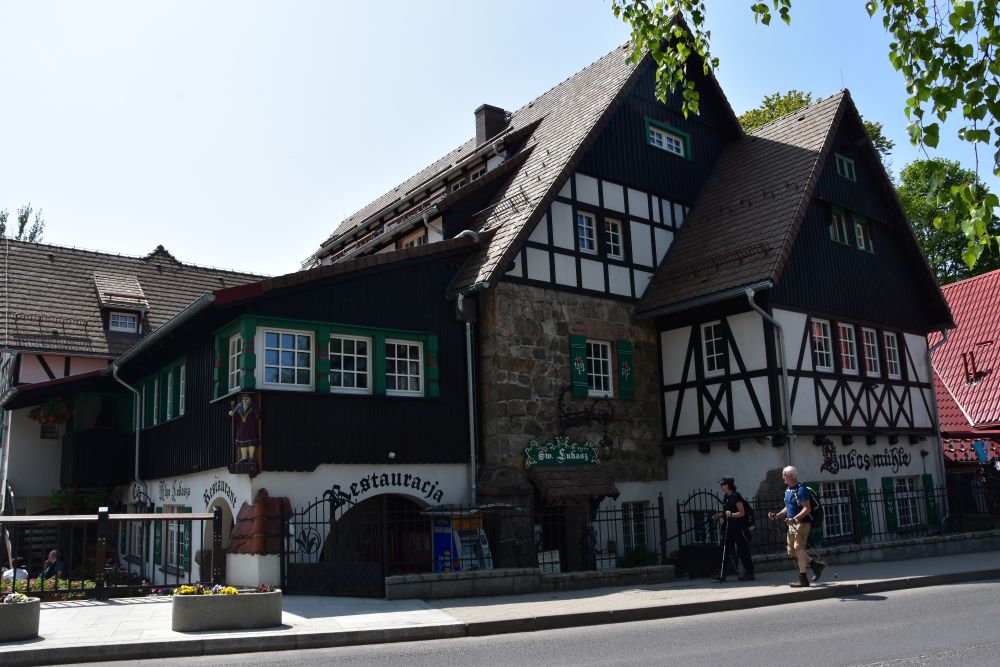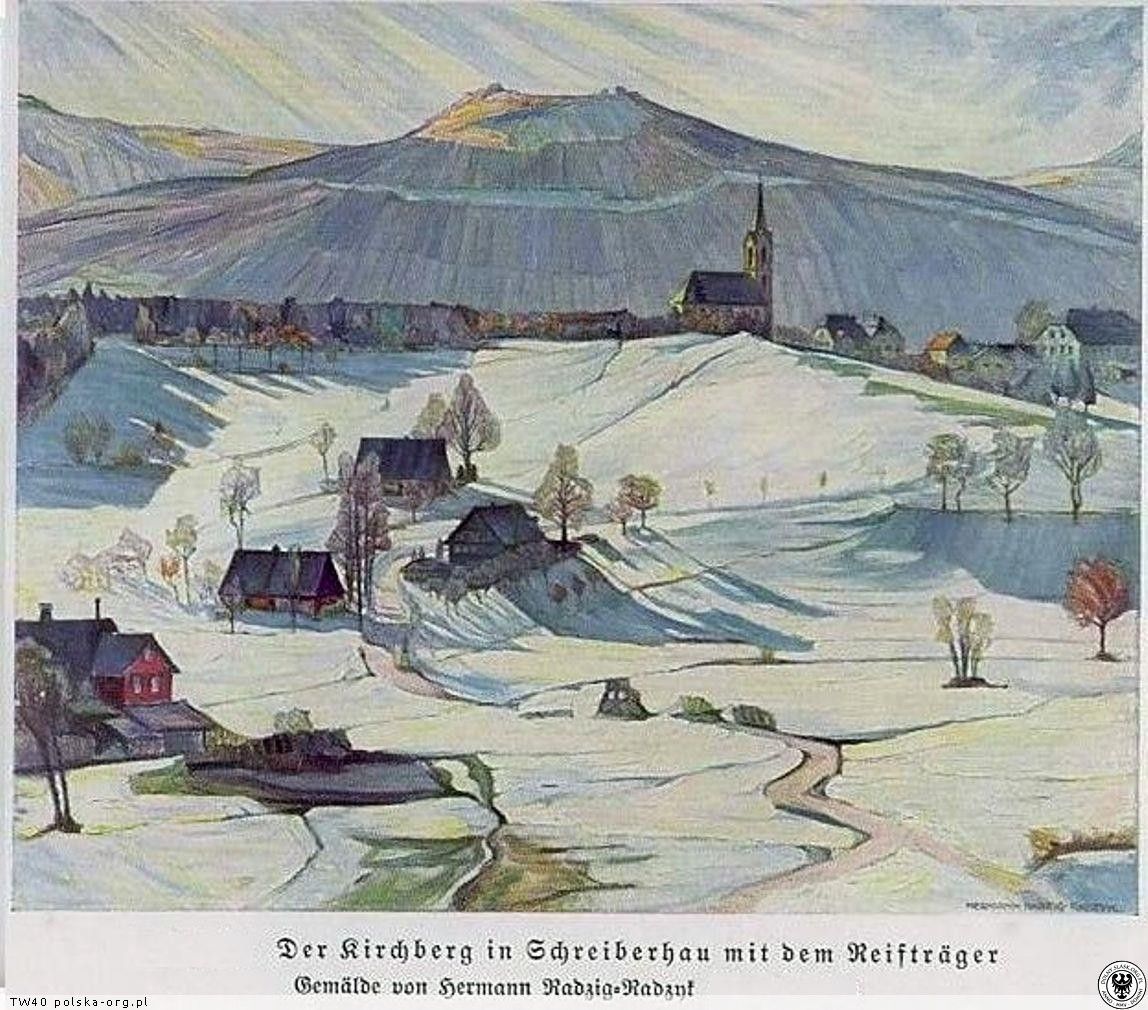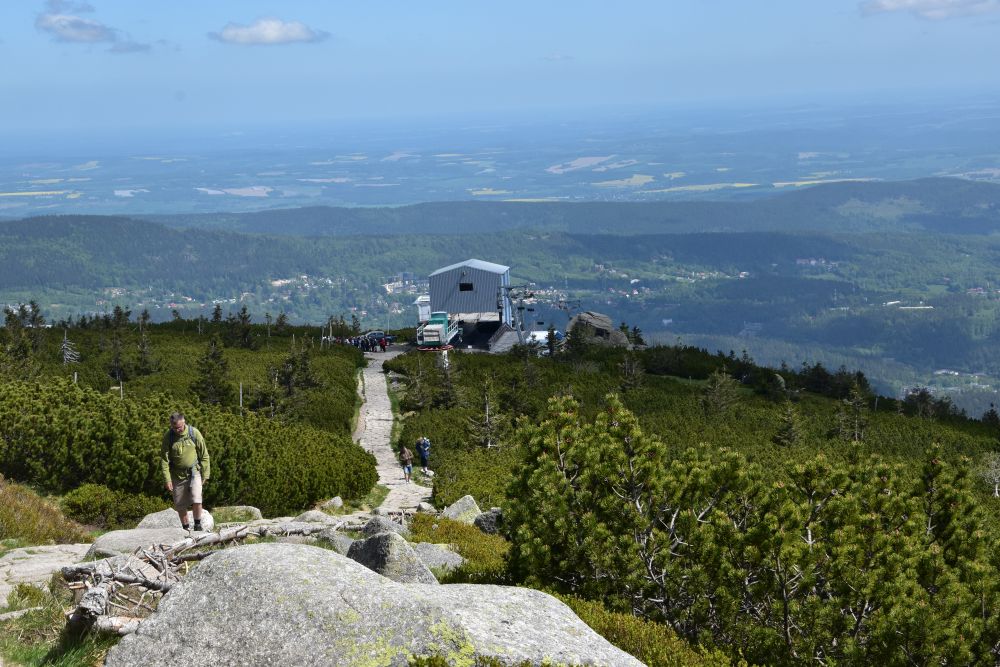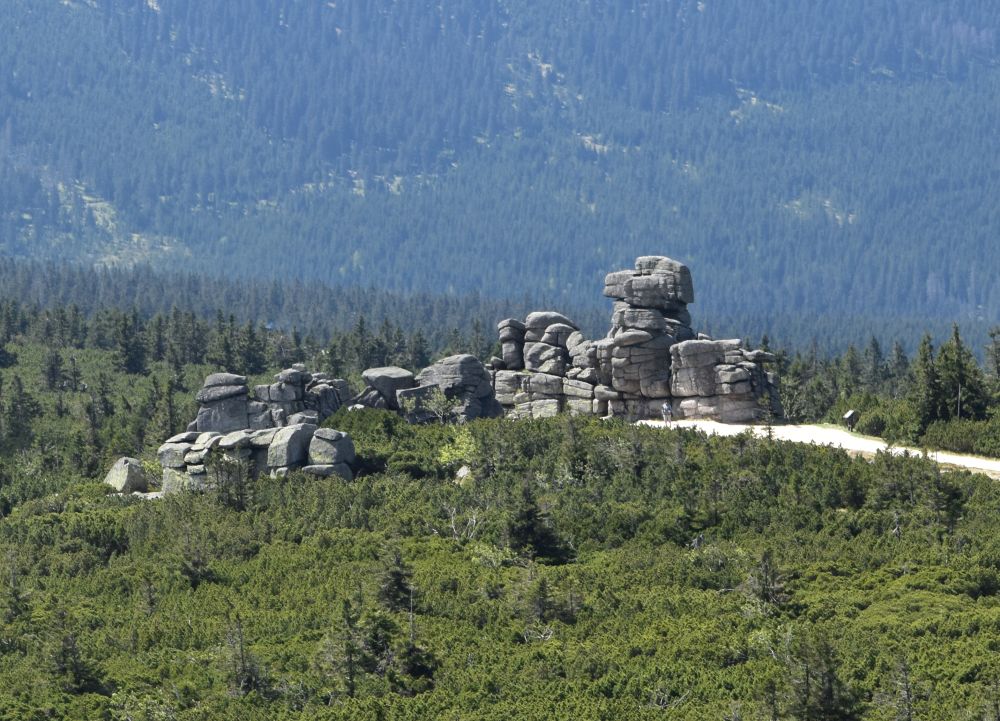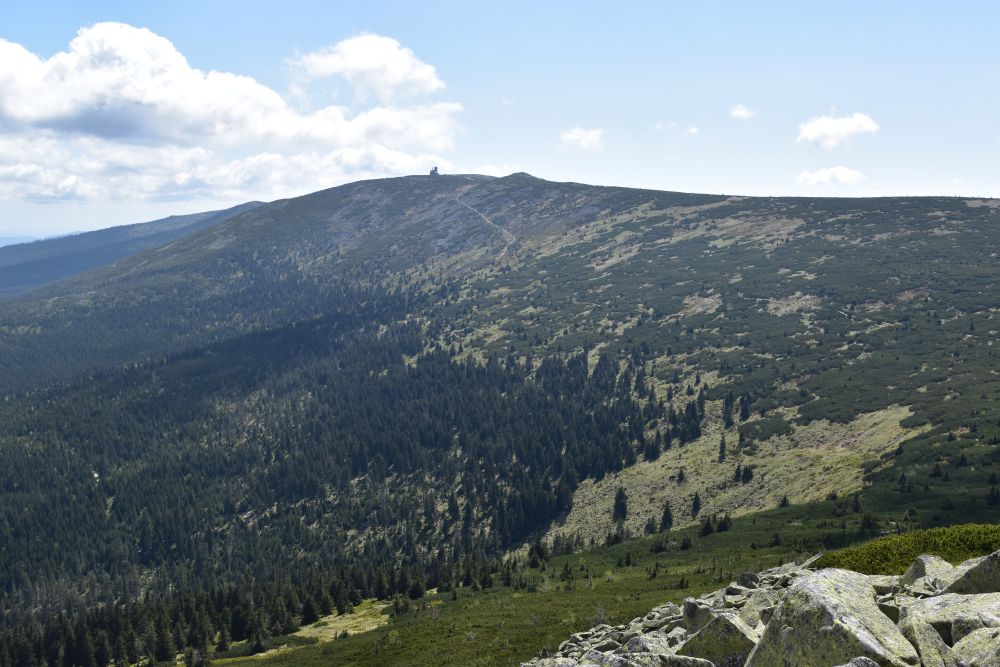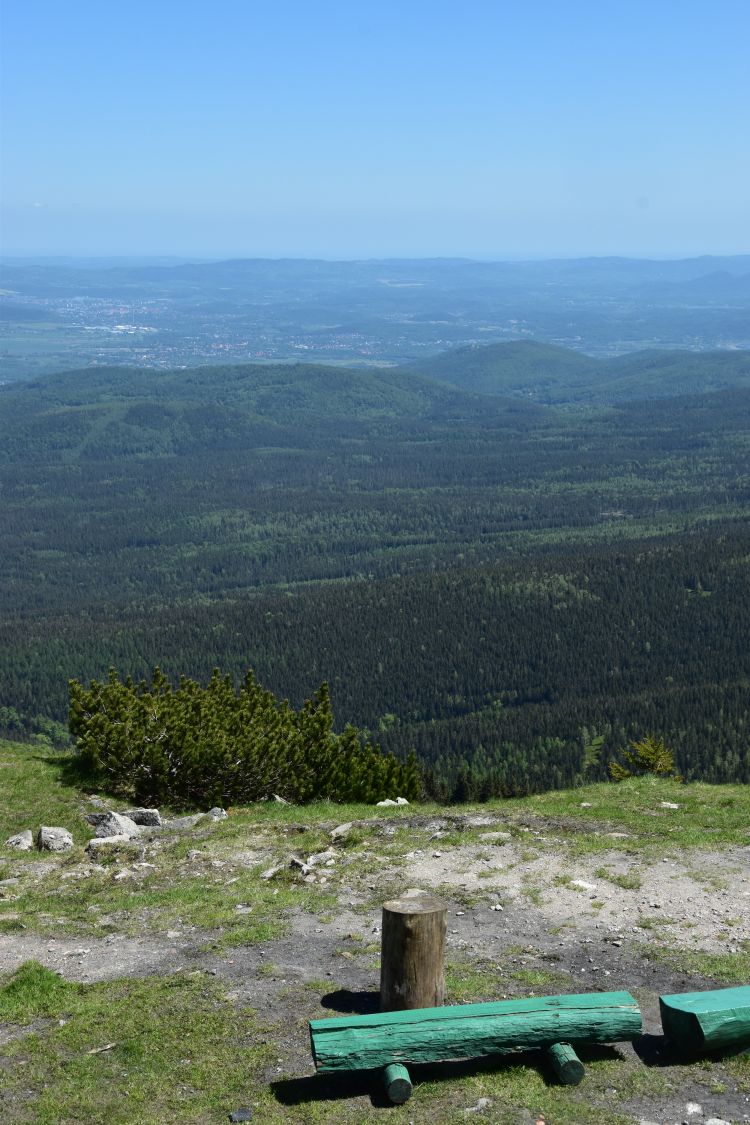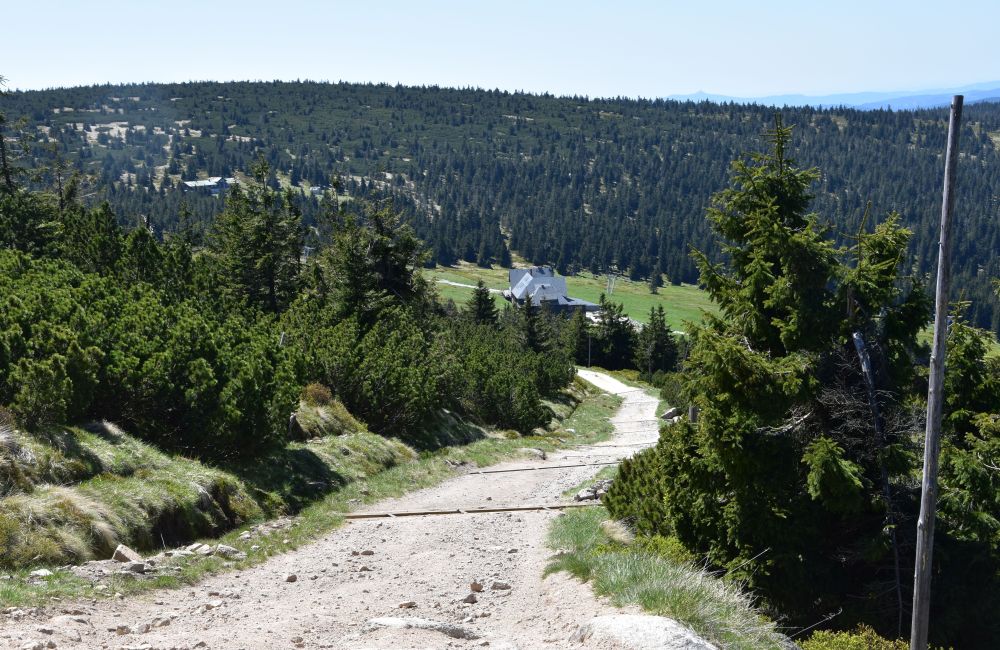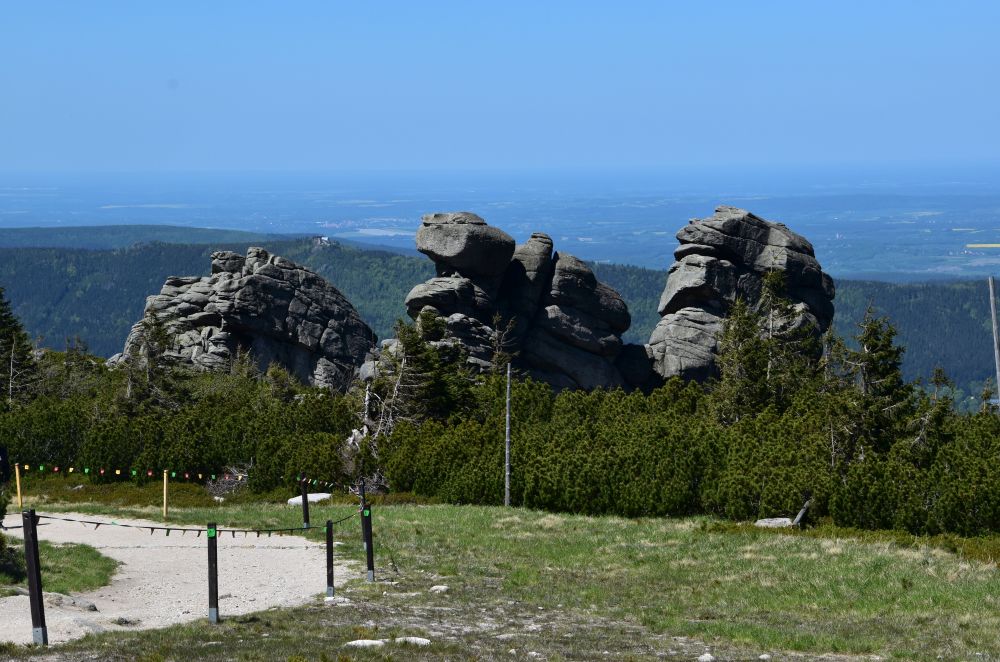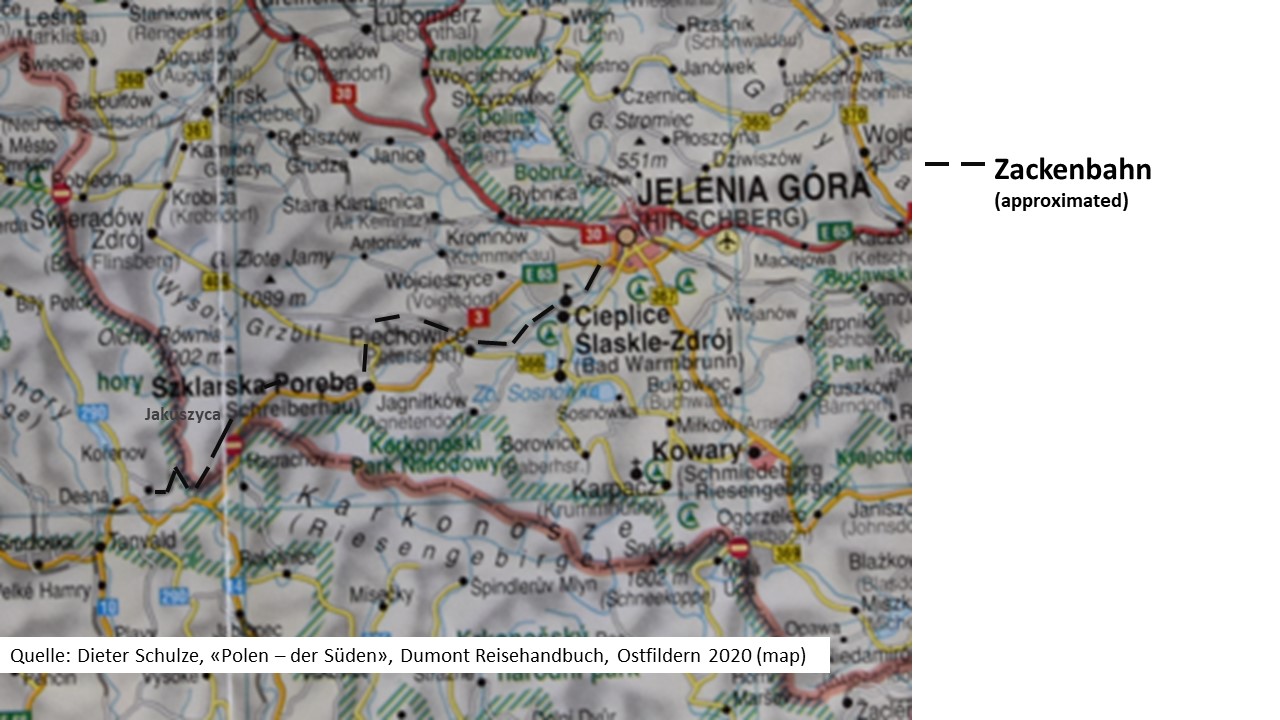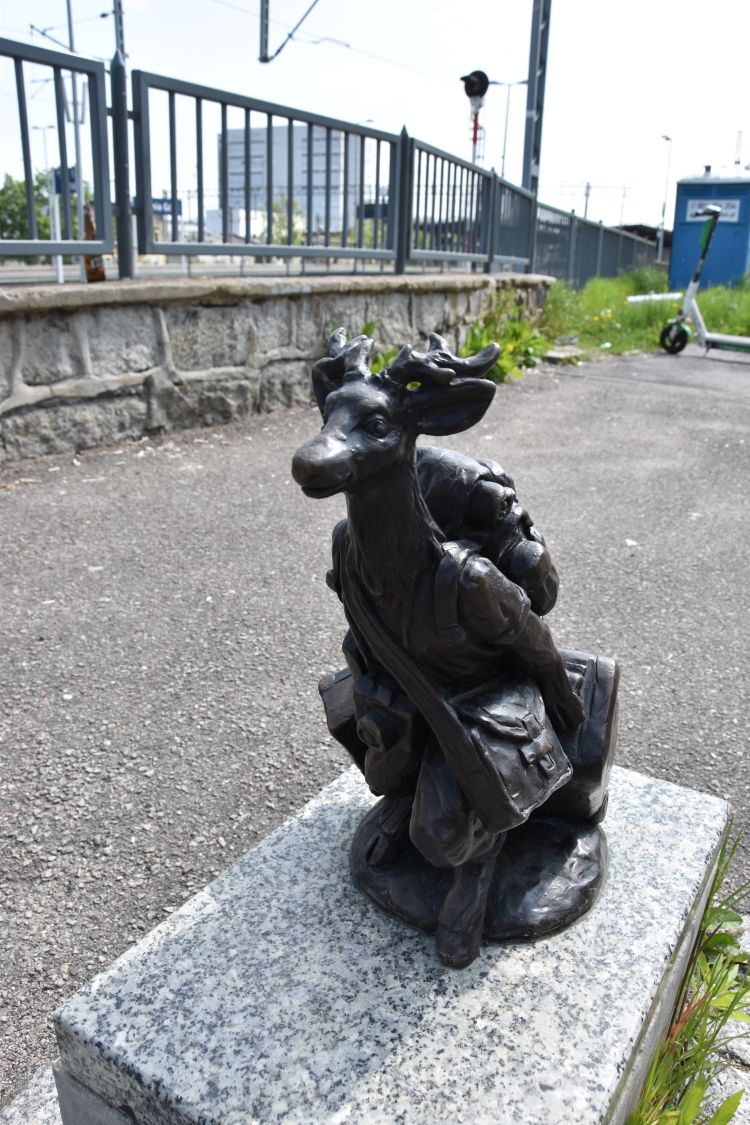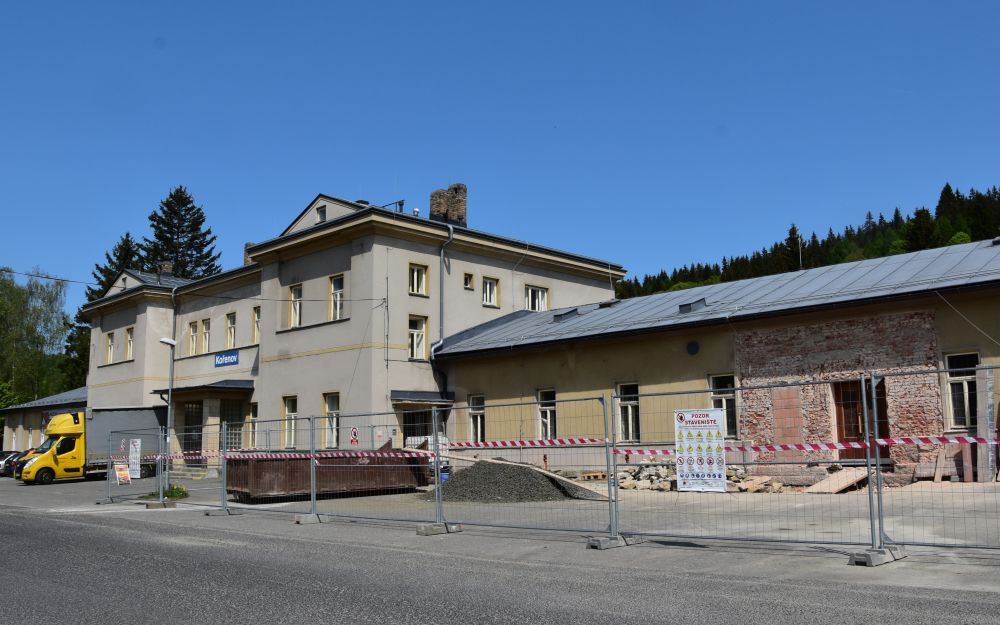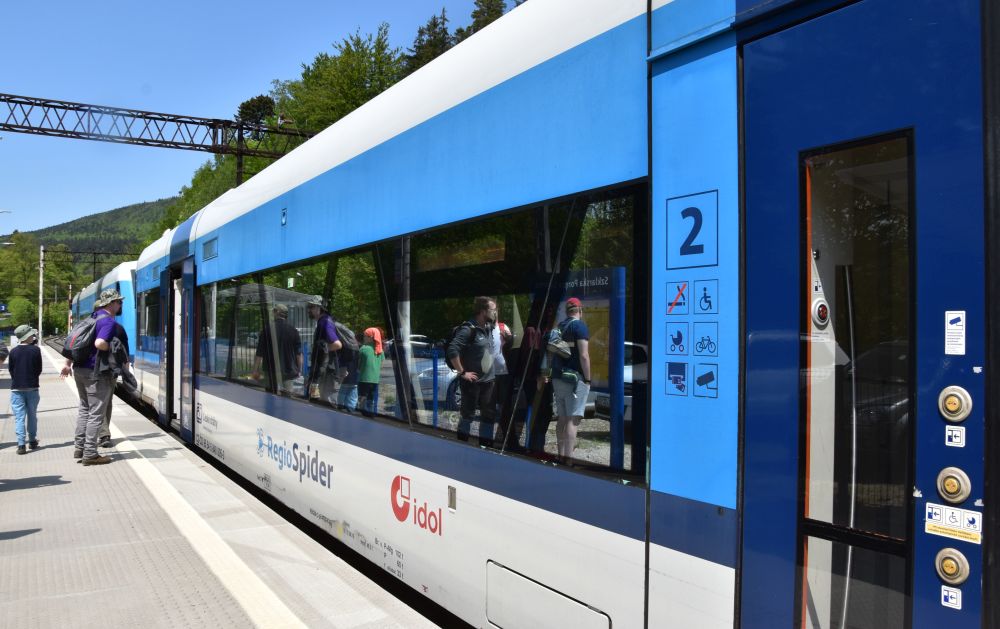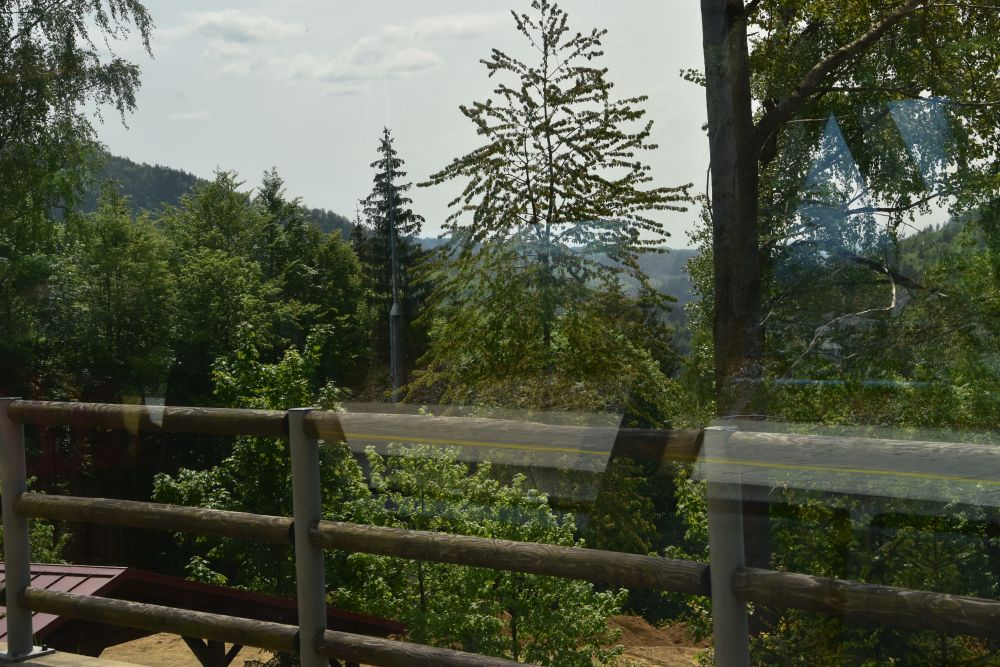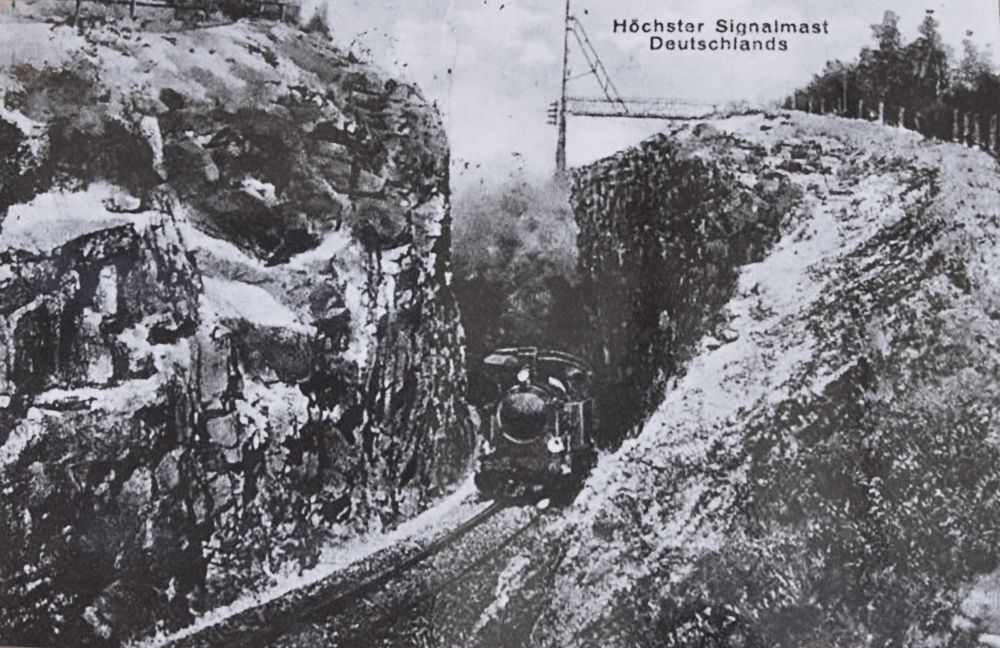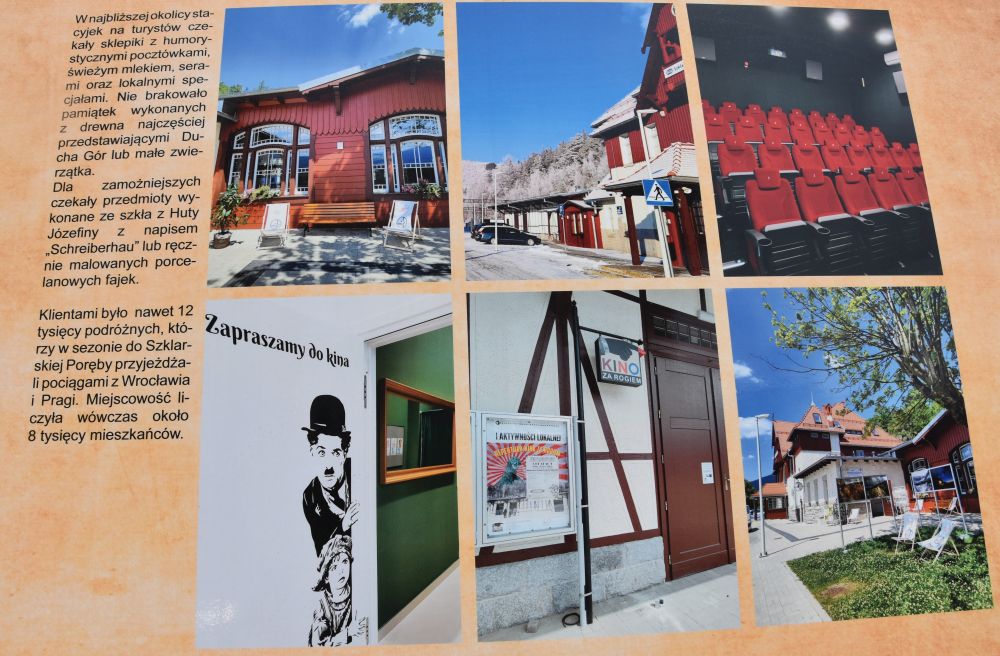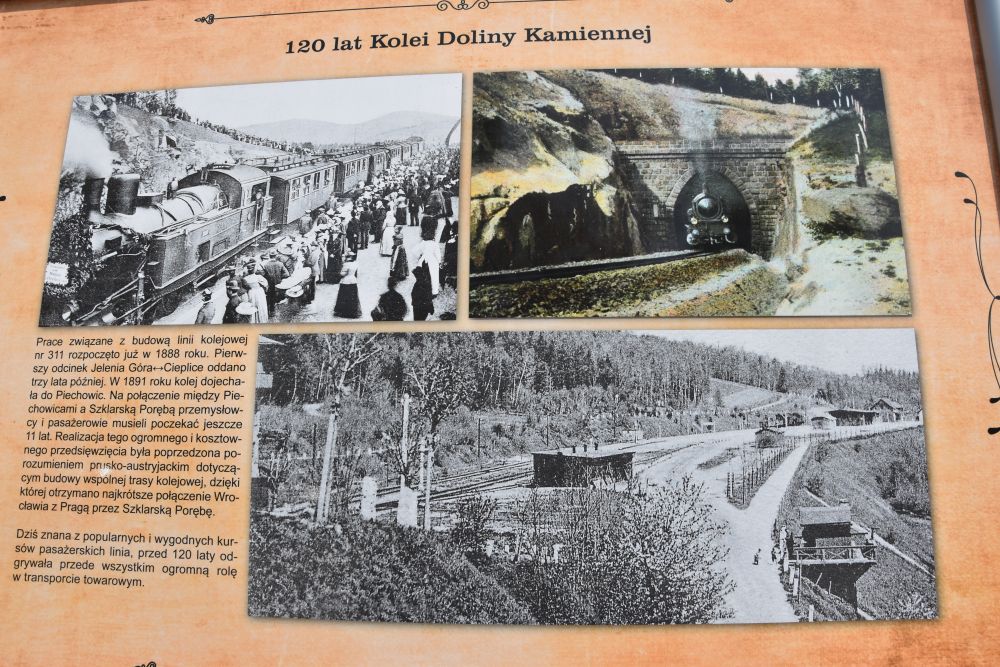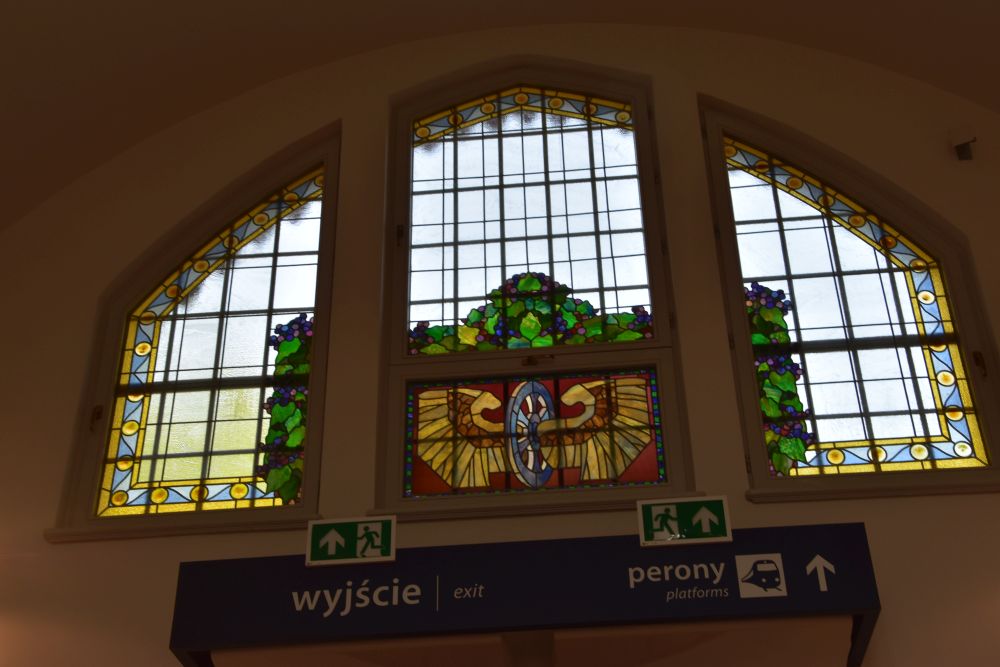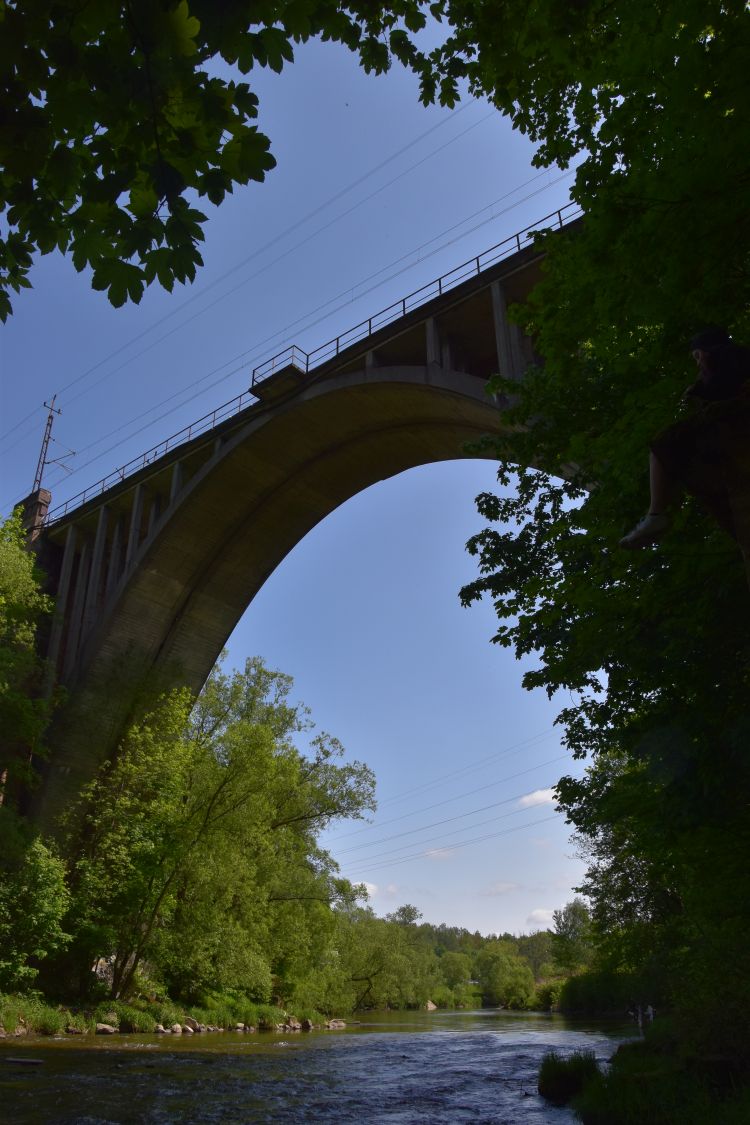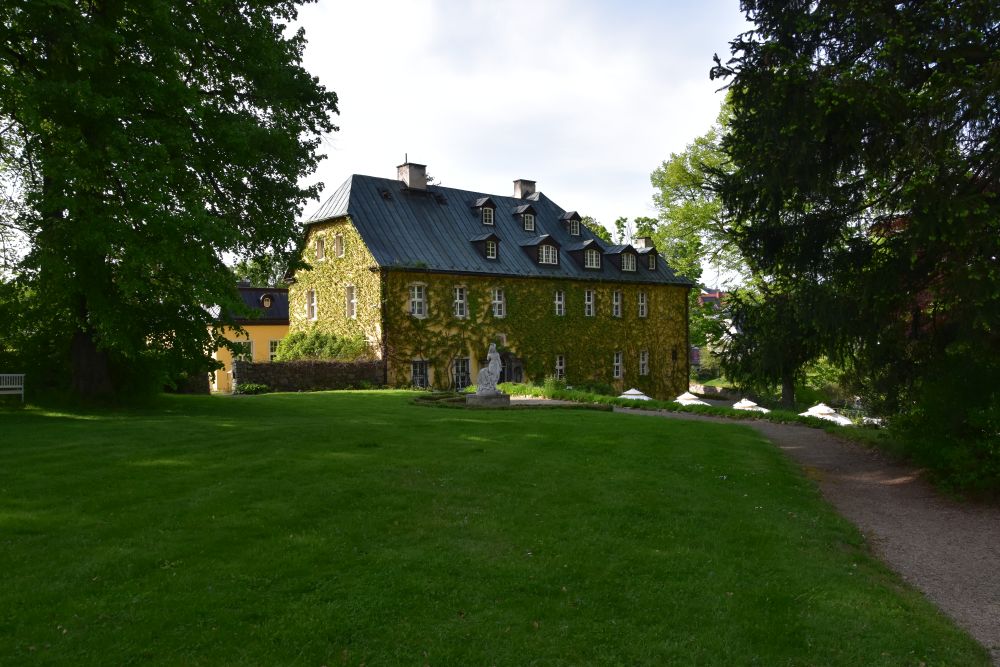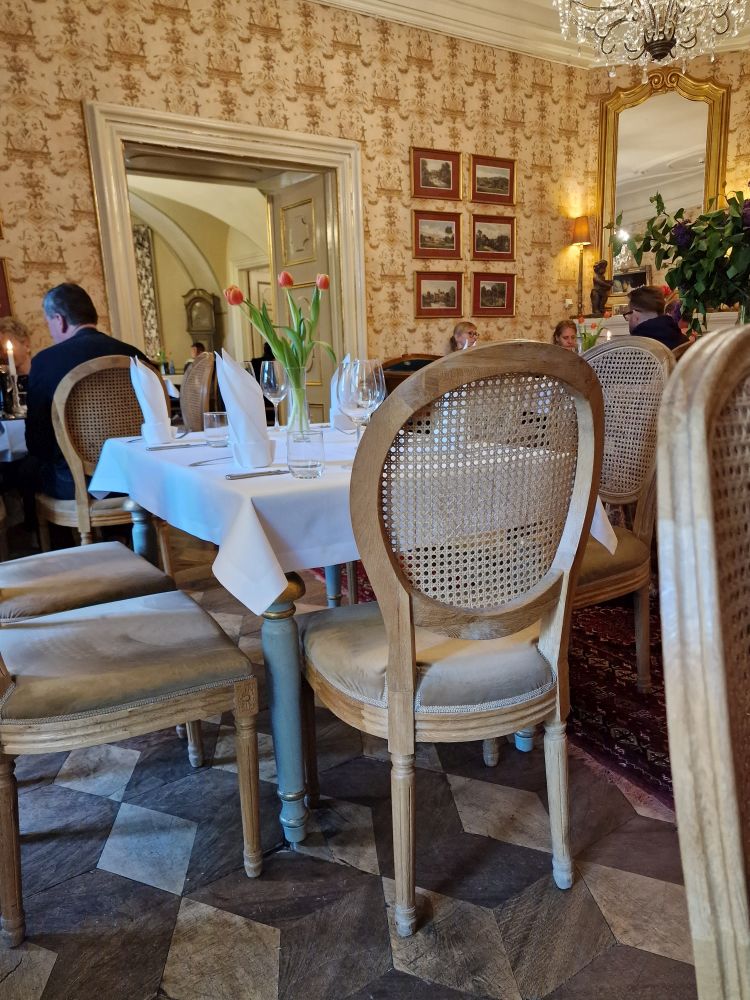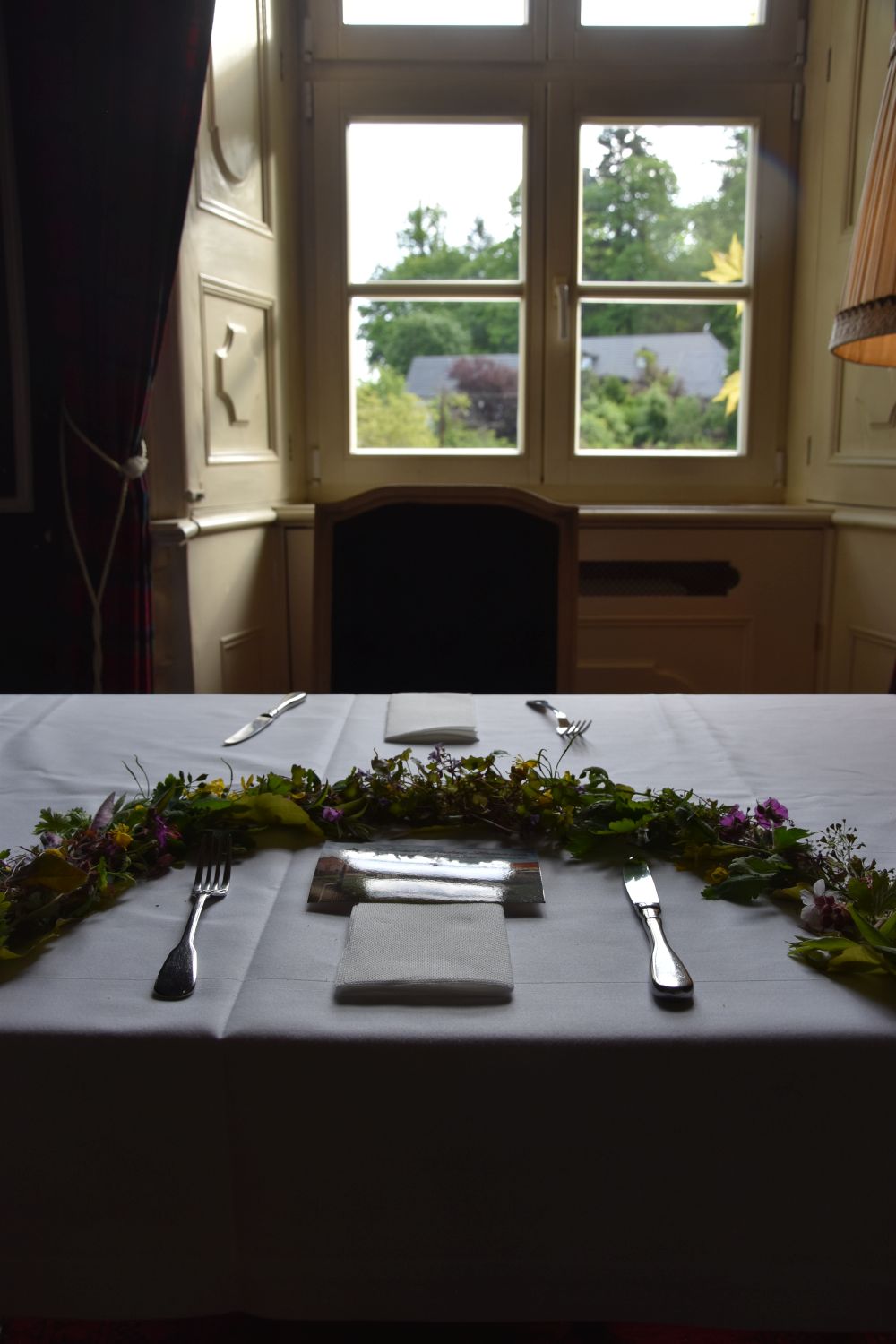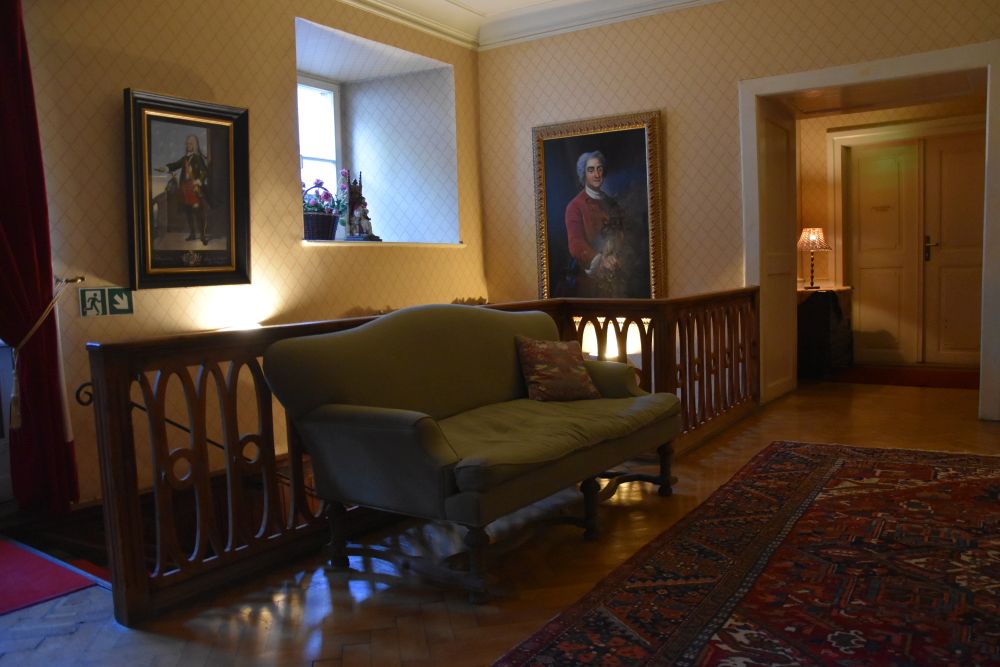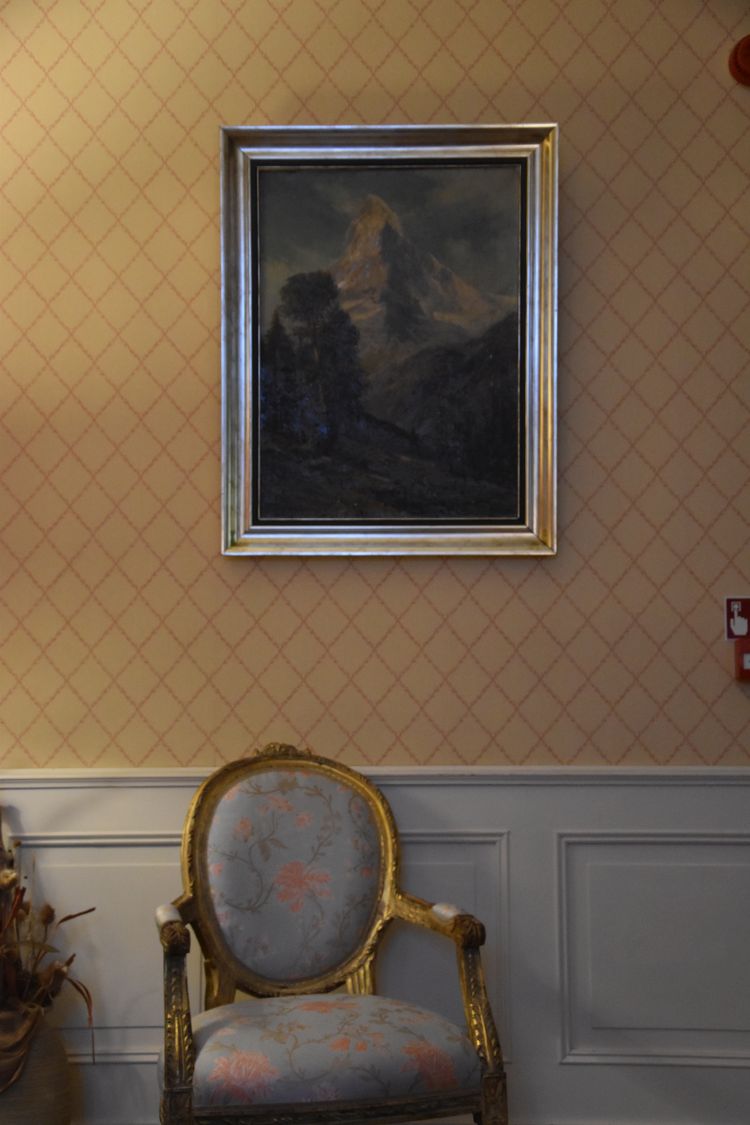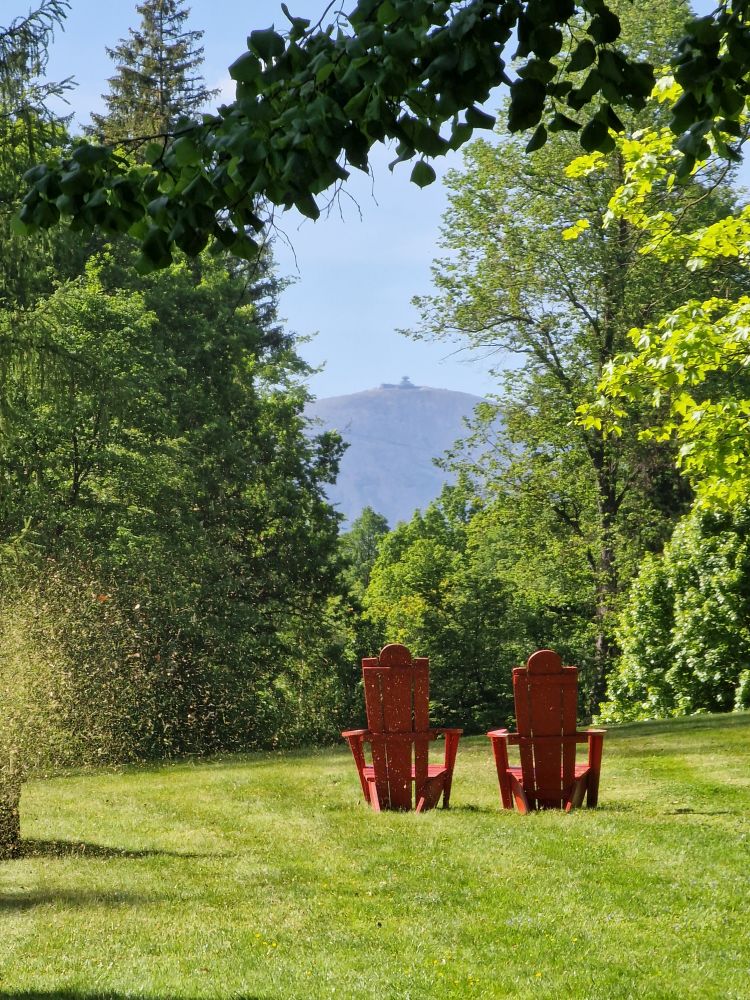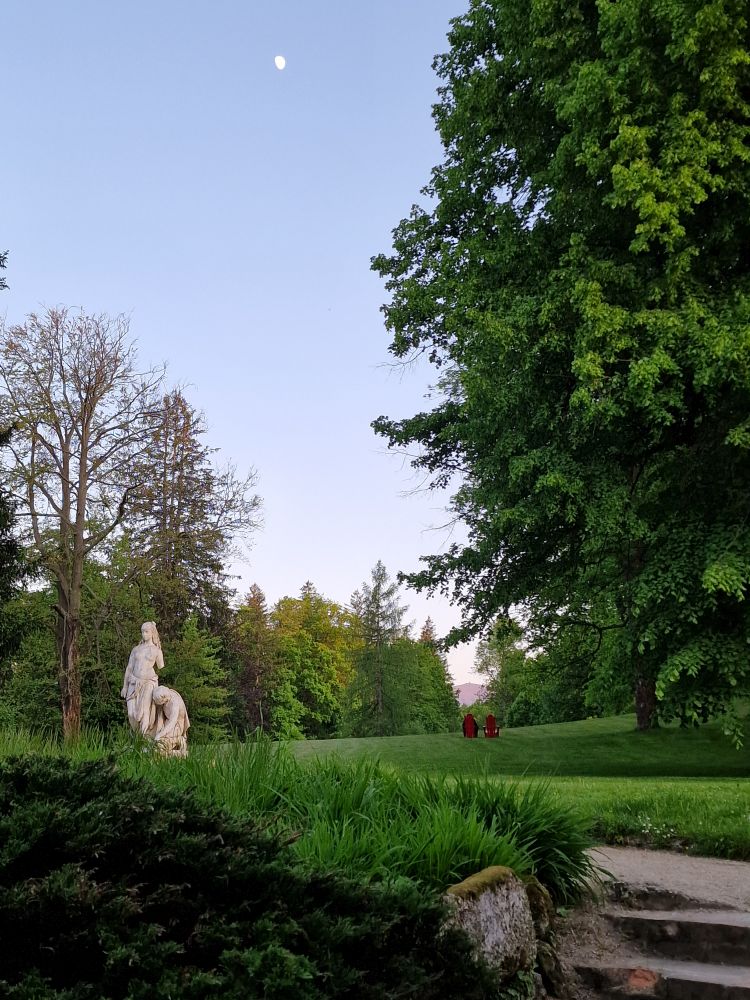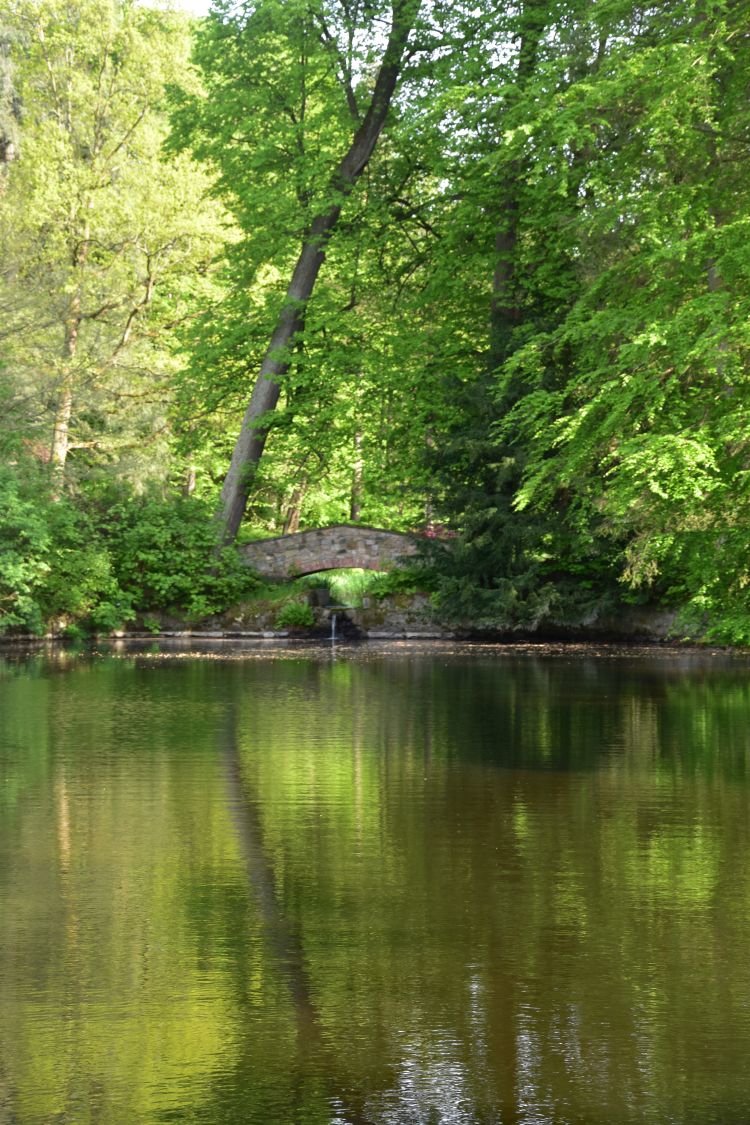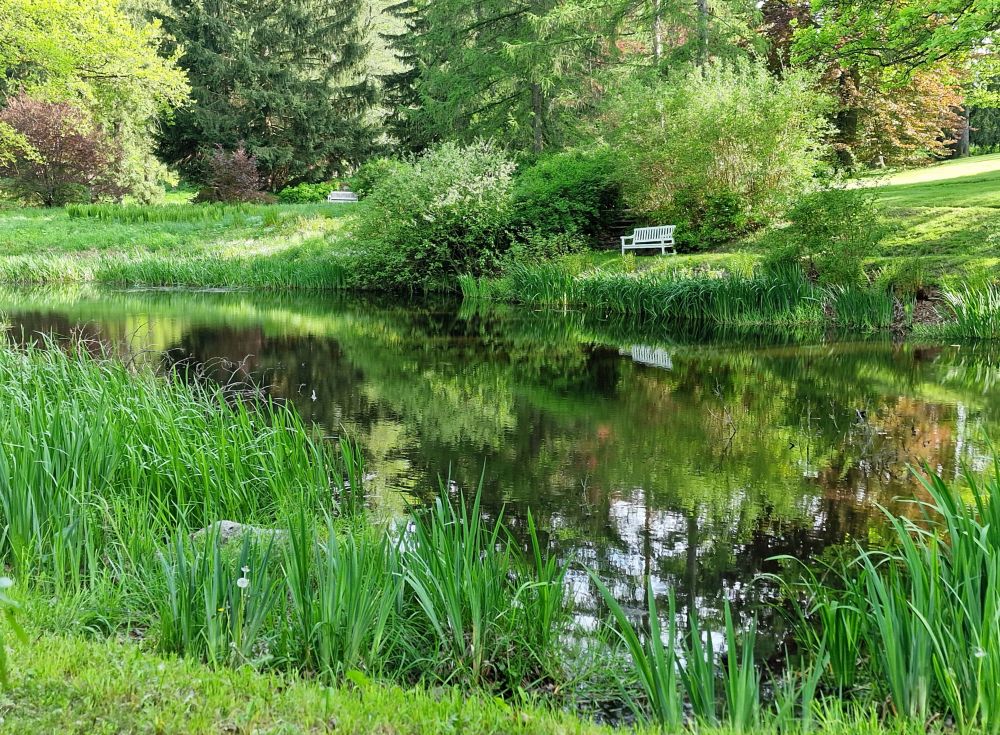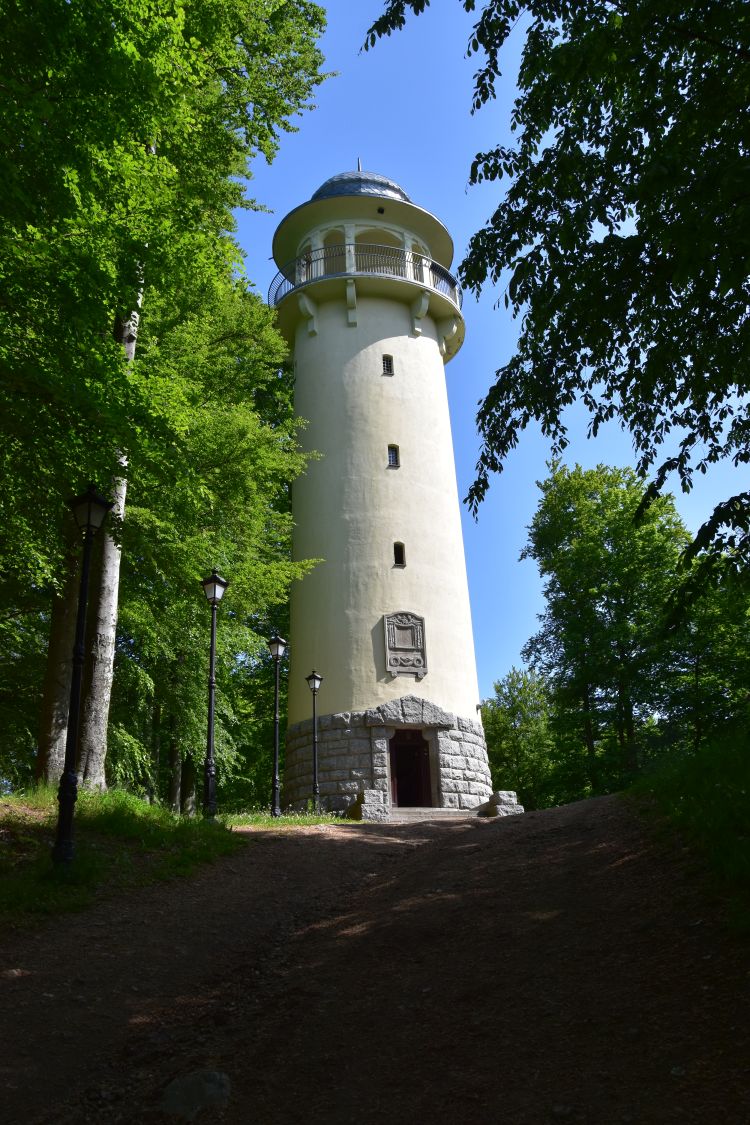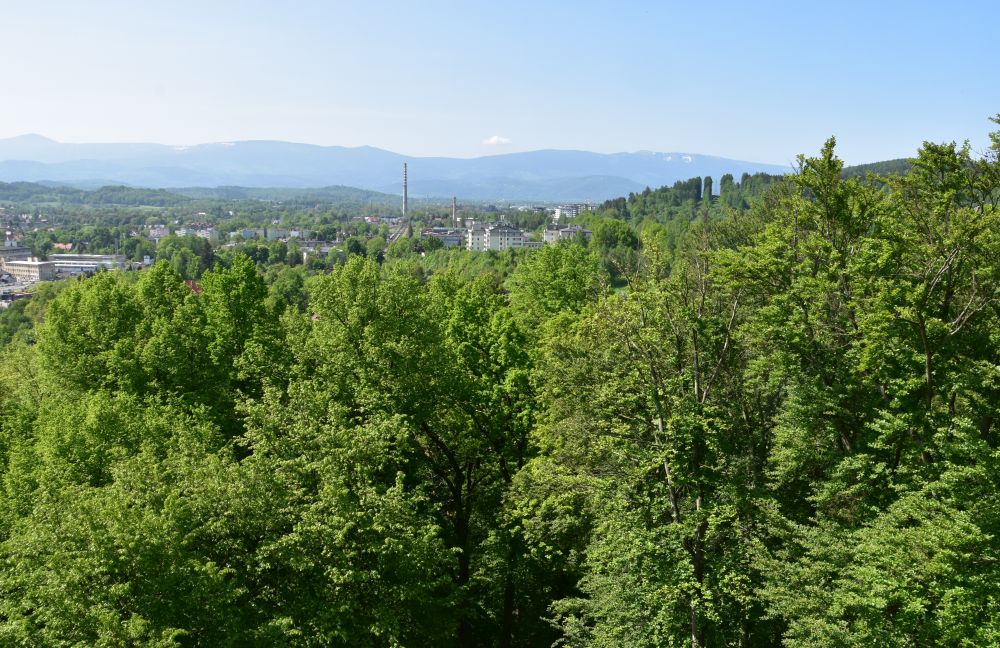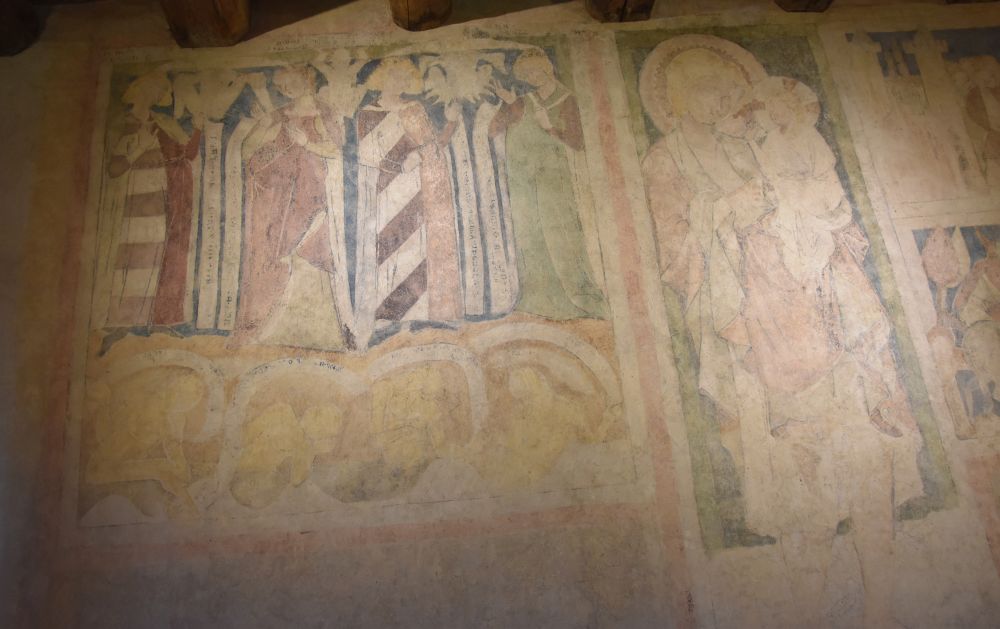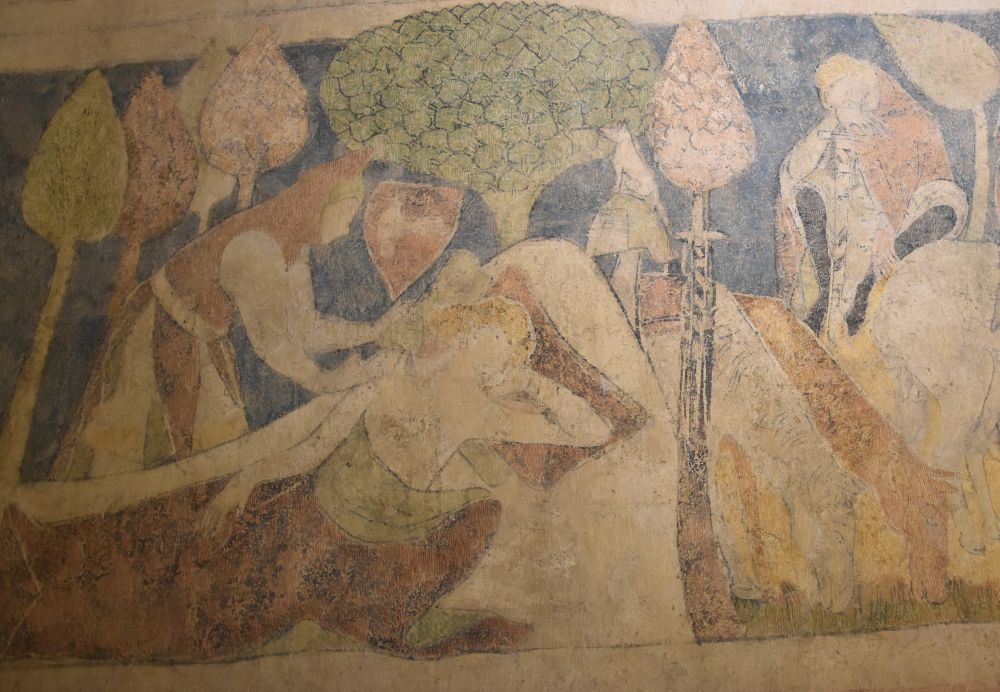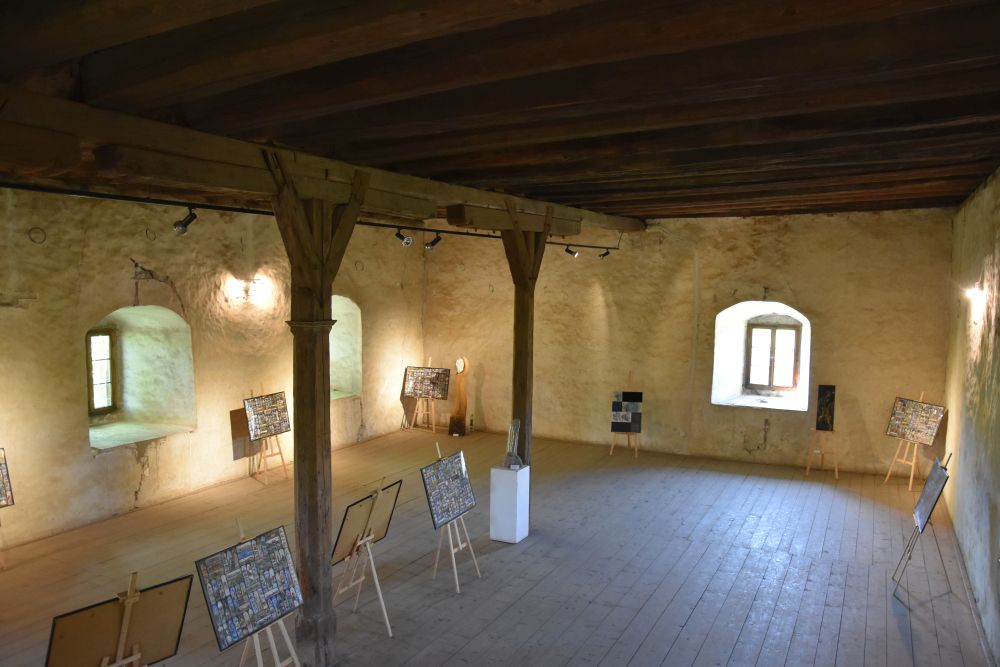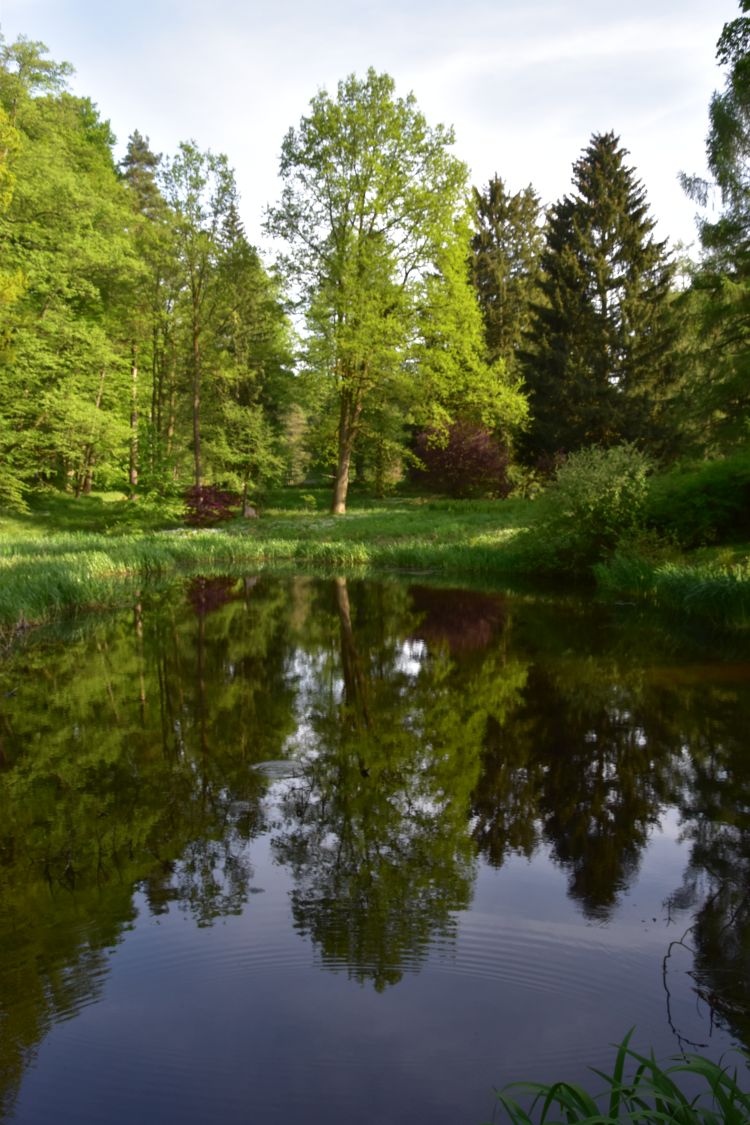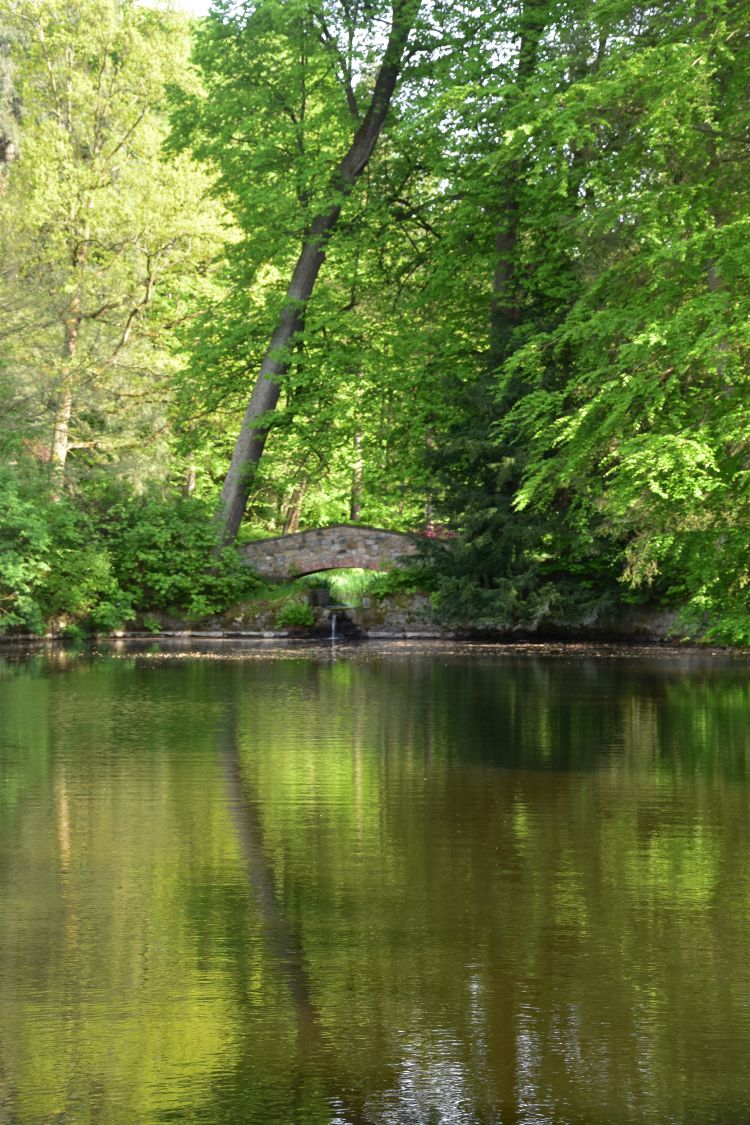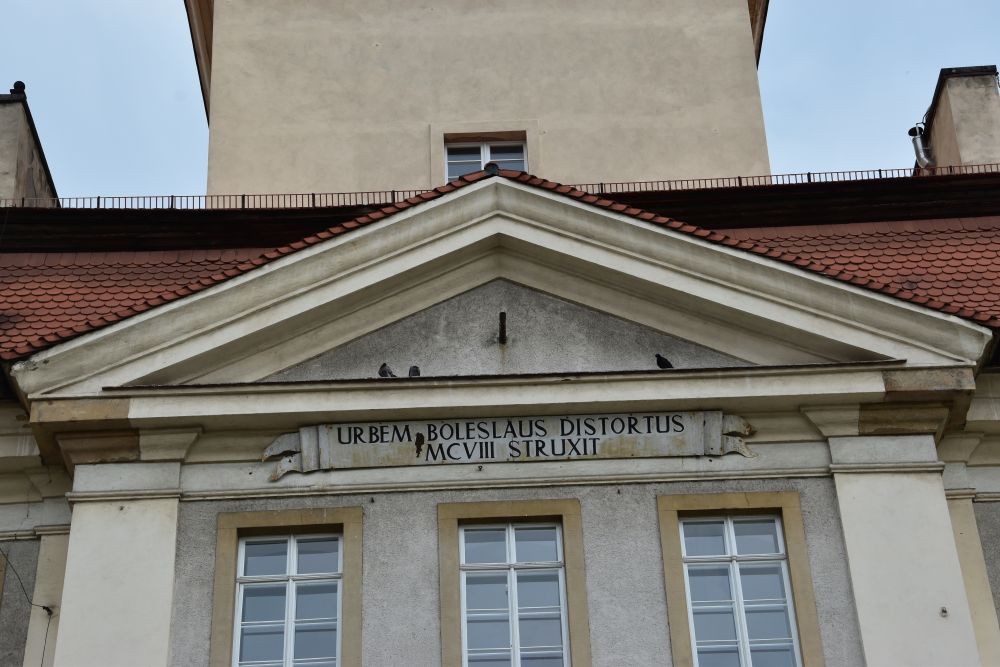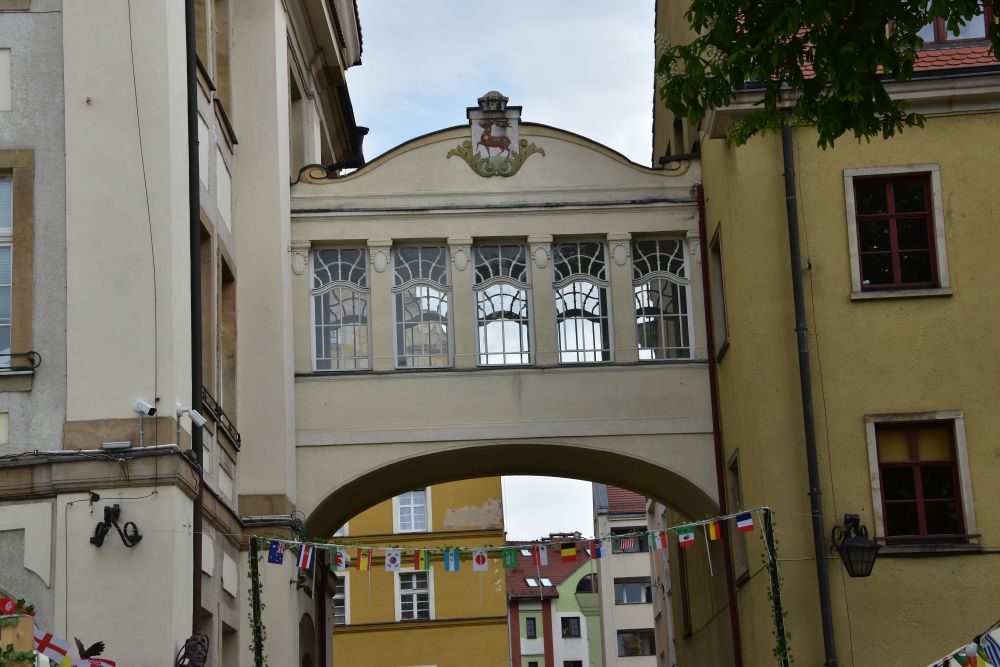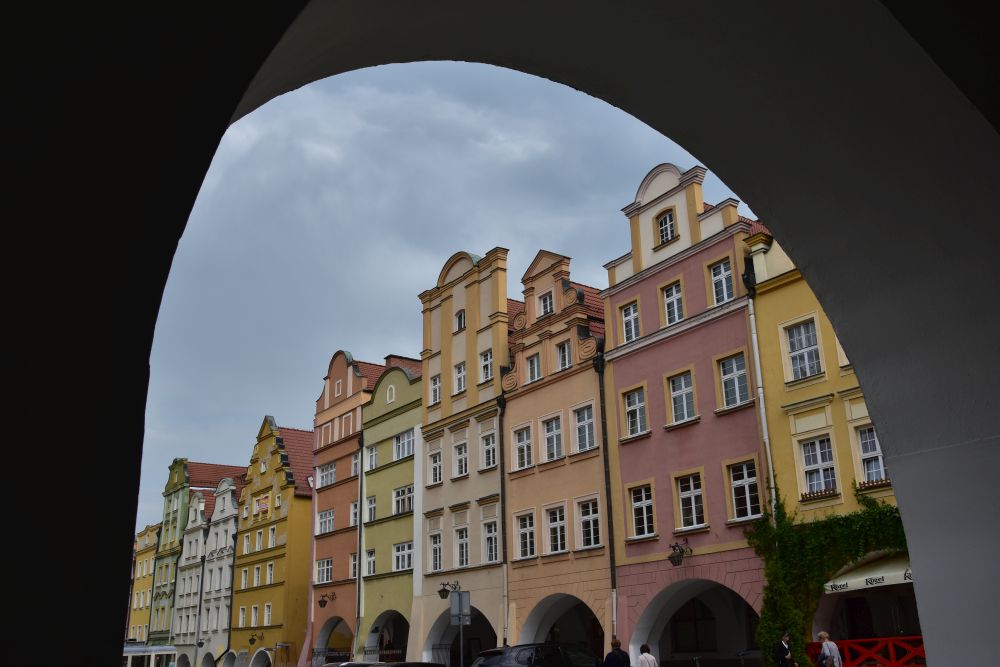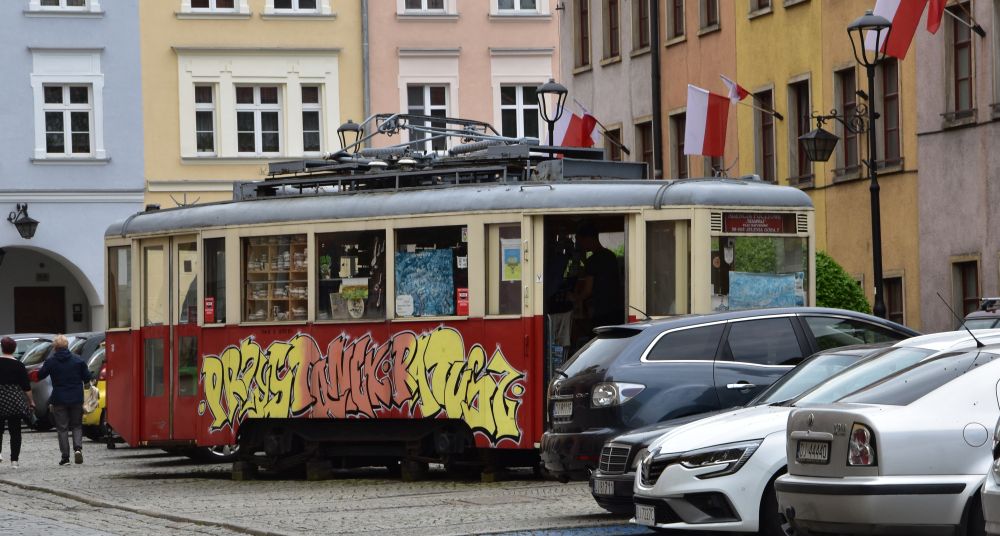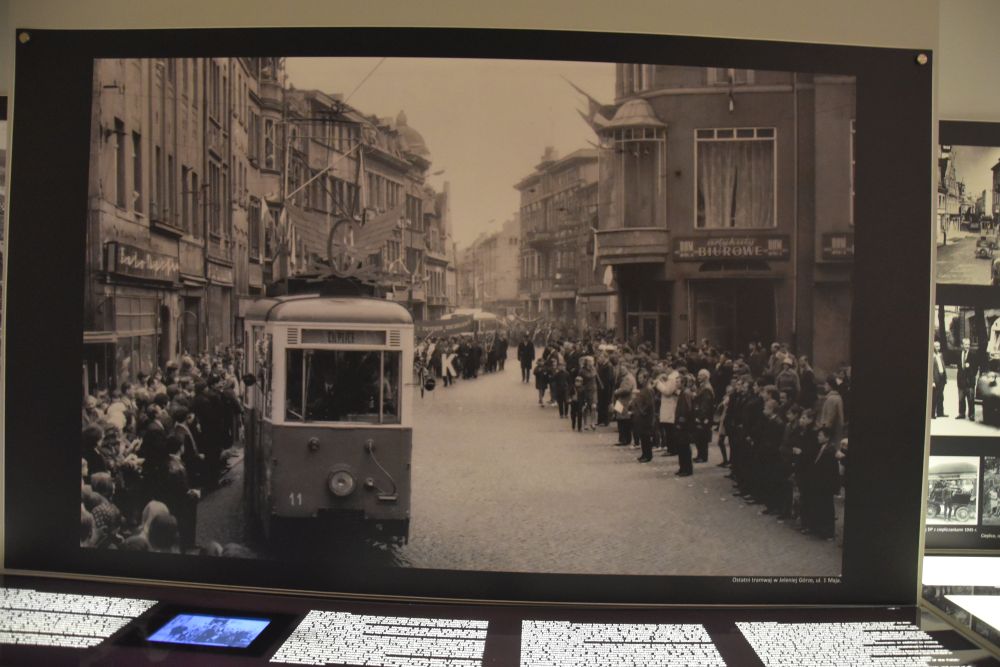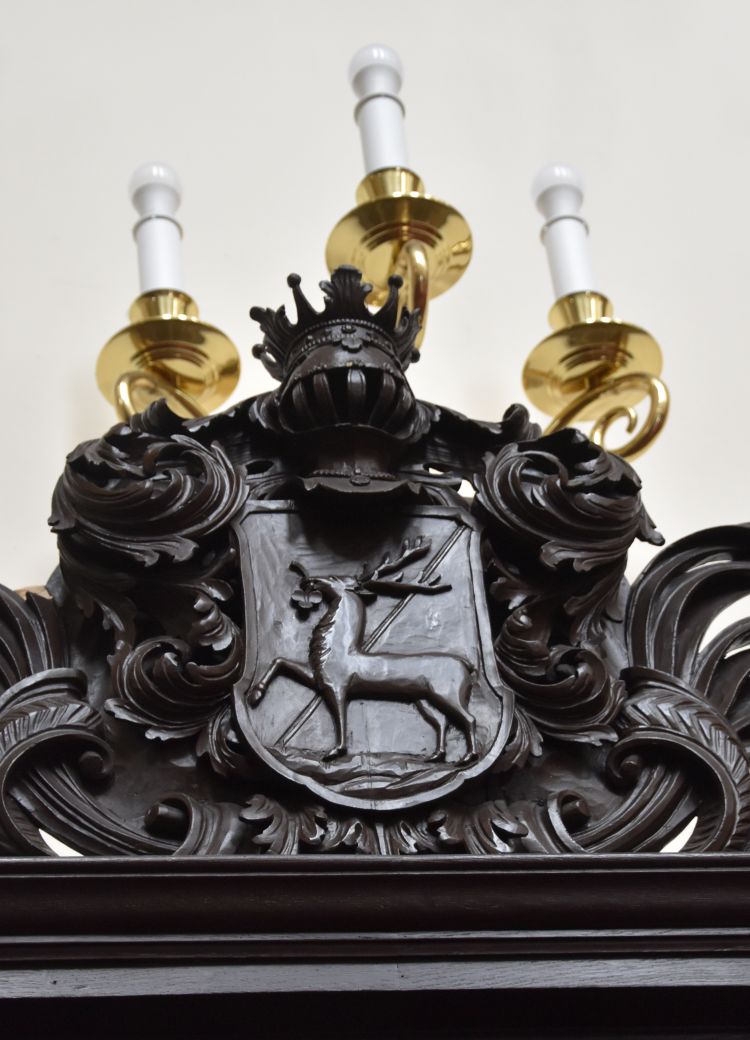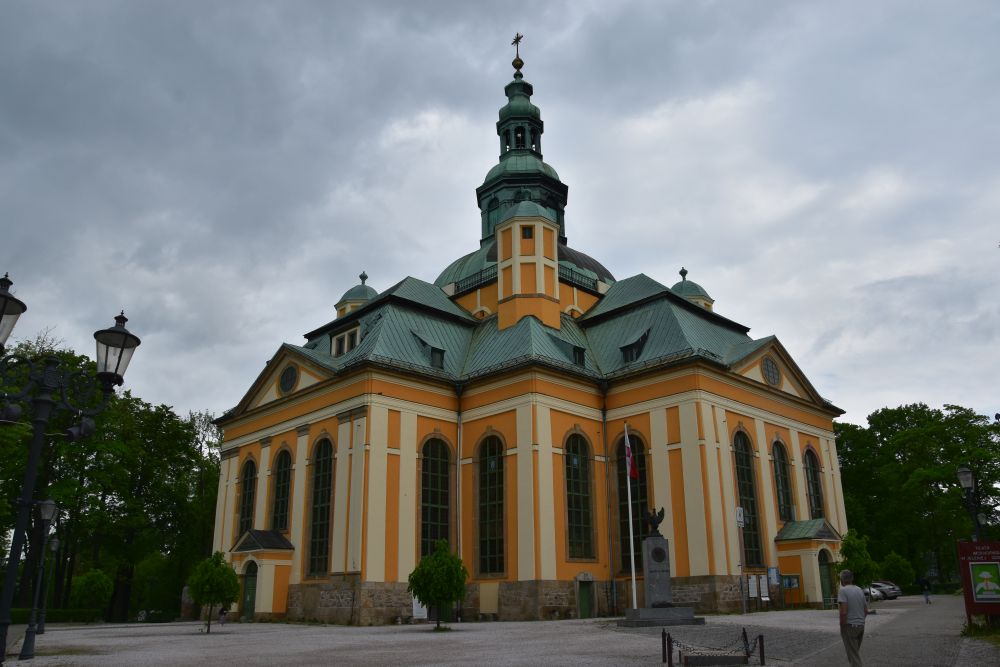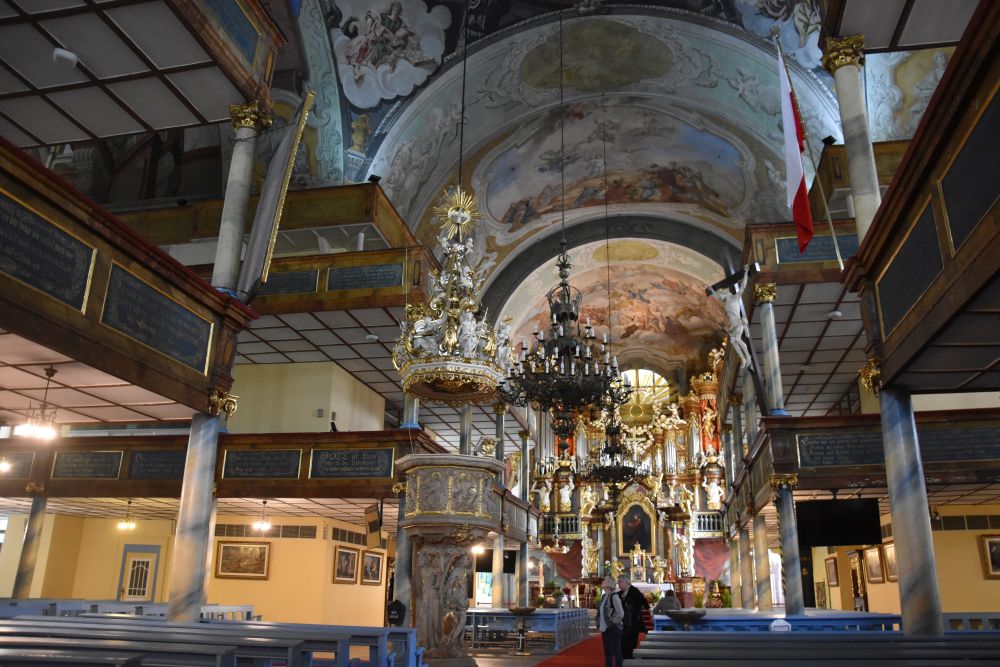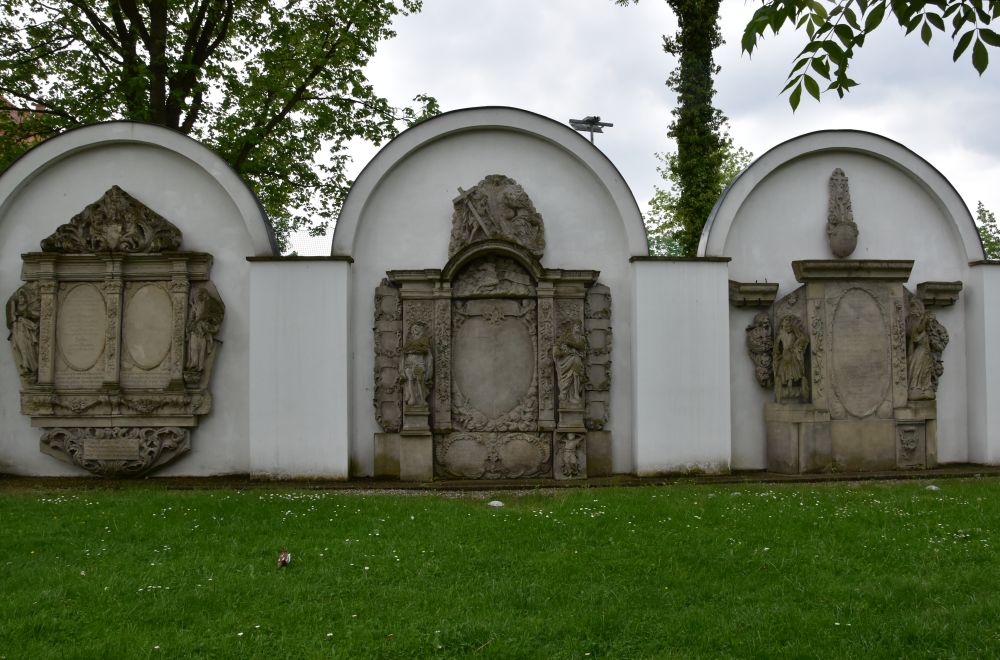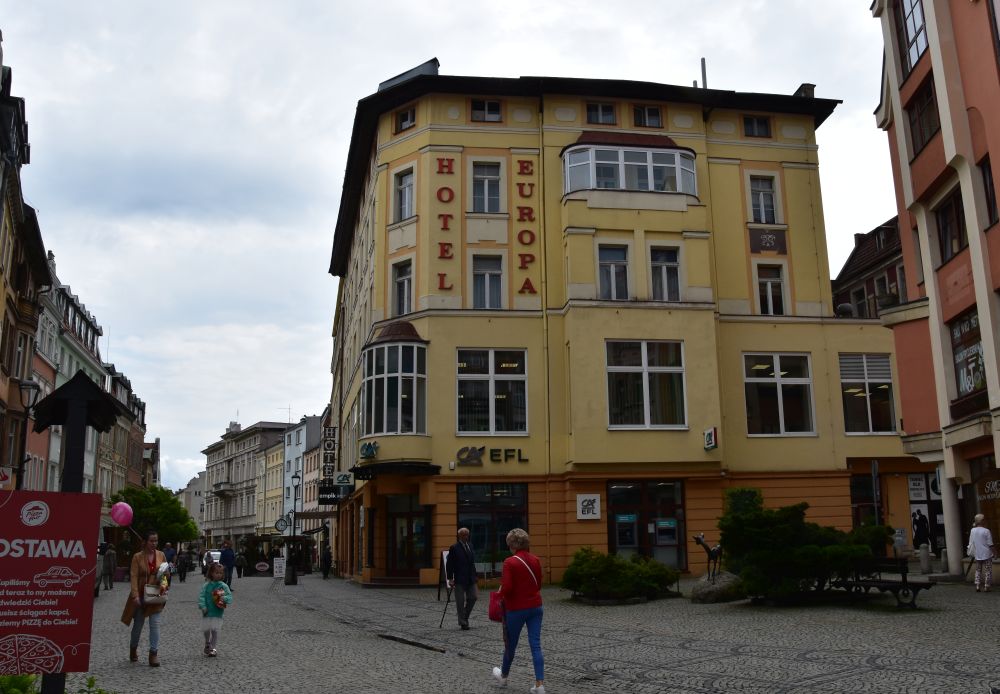A hundred years ago, in the year 1923, my grandfather Hermann Radzyk painted the “Blick in das Glätzische Land (view of the Glatz district)” in Silesia (now Poland).
The painting is owned privately by a friend of our family.
This old postcard is a very good match.
Source: Panoramy i widoki Sokolca, Sokolec – zdjęcia (polska-org.pl)
The postcard confirms, the painting “Blick in das Glätzische Land” shows Glätzisch-Falkenberg from the Euldörfel.
The Euldörfel was a holiday resort located above Falkenberg (today Sokolec). The “lower” houses (pensions and hotels) of the Euldörfel stood on this slope above the valley.
Source: Euldörfel-Schwarzwasser (Eulengebirge) :: Ansichtskarten-Lexikon
The houses of the “lower” Euldörfel spread loosely along the road leading uphill (across the photo from bottom left to middle right hand side); where the road turns, the “upper” Euldörfel begins (right hand corner of the photo). From here, it is about a half hour walk to the Hohe Eule (Welka Sowa), the highest peak of the Eulengebirge (Góry Sowie).
The Euldörfel has mostly disappeared today. Just meadows and trees, where the houses were a hundred years ago.
In August 2023, I identified the approximate position of the easel
From the valley below the former Euldörfel and above Sokolec, I climb uphill on a steep and winding footpath that ends joining this comfortable hiking path.
This panel shows, what the hiking path looked like a hundred years ago: It was a comfortable road that was used by coaches and pedestrians to get to the Euldörfel.
I imagine my grandparents and their daughter (my mother) walking along this road, while a horse carriage carries the easel, the canvas, the paint brushes and the oil colours.
A little bit higher up, I find another panel.
The panel shows two pensions of the former “lower” Euldörfel, and they have totally disappeared today. Nothing but meadows here.
Where was the house with the shed and the two trees that my grandfather had painted in the foreground? Back at home I study this old postcard again, and I am pretty sure, the house in the foreground was at the turn of the road towards the “upper” Euldörfel (see red circle).
Right above the turn, there was the famous pension called Müller Max Baude. Perhaps my grandparents stayed at the Müller Max Baude. Also this pension has disappeared.
Today, the view of the valley is hidden behind trees, as my photo shows. For this photo, I stand a bit lower than where the easel of my grandfather was (red circle on postcard).
Geographical location of the easel
On my Compass hiking map, I have marked the location of the painting. From the viewpoint at the former Euldörfel, my grandfather looked south towards the village Falkenberg (Sokolec) with Saint Martin’s church.
At the viewpoint, the map mentions “Murski pasterski” which means “shepherds’ walls”. However, I believe the “shepherds’ walls” were remains of the Euldörfel. At the time the map was created, it was perhaps not allowed to mention the German past with the Euldörfel.
With googlemaps, I give the overall geographical localization of the painting “Blick in das Glätzische Land”.
Source: Googlemaps
I needed several excursions to find the location of the painting “Blick in das Glätzische Land”
In autumn 2022, I am at Silesia for the first time to look for some paintings of my grandfather. I just knew, he painted somewhere in the county Glatz, now called Powiat Kłodzko. I settle in the charming hotel Palac Kamienec near the city Kłodzko.
The park of the Palac is romantic, particularly on a hazy autumn morning.
On the first day, I drive north to Sokolec, look at Saint Martin’s church, and feel helpless. Will I ever be able to find the paintings? I am not able to recognize this church from the paintings.
A year later, in 2023, I return to Silesia. Sokolec with Saint Martin’s church attracts me again and again. I evaluate the valley above Sokolec. I start to suspect that the “view of the Glätzisches Land” shows the valley of Sokolec. However, at the viewpoint above Sokolec, I see only meadows and trees, no houses here, even no ruins. Around the Eulenbaude, still higher above Sokolec, I find a few houses; from here, it is not possible to see the valley and Sokolec (Falkenberg).
I look at Saint Martin’s church again and again. I see that the belfry is shorter than on the painting. I notice the panel that says, the tower had been destroyed during the war; it was rebuilt after 1945. Perhaps the belfry was higher before, and it is this church that my grandfather painted?
The landlady of the hotel notices that my grandfather had painted a red house next to the church in the valley. There is a red house next to Saint Martin’s church still today, she says, and it is on sale. This is what the red house looks like now; it may be difficult to sell it.
Finally, I solve the enigma; a few months later, in August 2023, I park my car above Sokolec (in the hairpin turn of the new main road leading to Rzeczka – see Compass hiking map).
Through meadows and trees, I walk uphill on the winding footpath, and I find the panels that show the houses of the former Euldörfel. Now I understand: Where I only see meadows now, there was the holiday resort Euldörfel a hundred years ago, and my grandparents were here in 1923. From here, my grandfather painted the house with the shed in the foreground, the village Sokolec, Saint Martin’s church and the mountains of the county Glatz in the background.
The postcard confirms, the painting shows the view of Sokolec (Falkenberg) from the Euldörfel.
Source: Panoramy i widoki Sokolca, Sokolec – zdjęcia (polska-org.pl)
I am pretty sure that the easel stood at the turn of the road (red circle).
Another enigma of Hermann Radzyk solved – I feel close to my grandparents (that I have never met) and to their daughter, my mother.
The area around Sokolec with the Welka Sowa is well worth visiting, also today
Though less well-known than the Riesengebirge (Karkonosze), the area around Sokolec with the Welka Sowa, the highest peak of the the Góry Sówie, is worth visiting.
On Welka Sowa, the Bismarck tower has just been renovated. It shines in brilliant white.
I climb the tower and enjoy the view of the “Glätzisches Land”. The mountain in the middle (with meadows and forest stripes) is Niczyja (Neumanskoppe). Sokolec (Falkenberg) is located left at the foot of Niczyja. The mountains in the background are the Góry Stołowe (Heuscheuergebirge) that mostly belong to the Powiat Klodzko (County Glatz). The Góry Stołowe form the background of my grandfather’s painting “Blick in das Glätzische Land”.
By the way, behind Niczyja (former Neumanskoppe) is Sierpnica (Rudolfwaldau), where my grandfather painted the “Neumannskoppe” with the “Maria Schneekirche” in 1919.
When hiking around the Welka Sowa, I hear the soft hissing sounds of the Poles around me. I do not come across any foreign tourists. The Poles ask me again and again: “What are YOU doing HERE?” I was the only non-Polish hiker. “Ah”, they said, when I showed them the photos of my grandfather’s Silesian paintings.
Sokolec is a laid off small village with a friendly restaurant. The Oberza PRL commemorates “socialist” times, with the Trabbi…
… and with the menu that contains meals with a communist touch.
I found some lighter meals on the list – I liked those with fish and cabbiage. I visited the Oberza several times, when investigating the area, and I enjoyed the hospitality.
The panel on Saint Martin’s church at Sokolec thanks for the funds and the active support received by former German and present-day Polish inhabitants as “a symbol of comprehension and admonition for peace”.
I wish that peace will prevail – now and in future.
